May 26th – June 13th, 2012. We left for Hong Kong on May 26th 2012 and returned June 13th to Toronto. While we covered a number of locations, outlined below, the itinerary wasn’t so packed to be uncomfortable.
Blog Entries:
-
Early flight to HKG
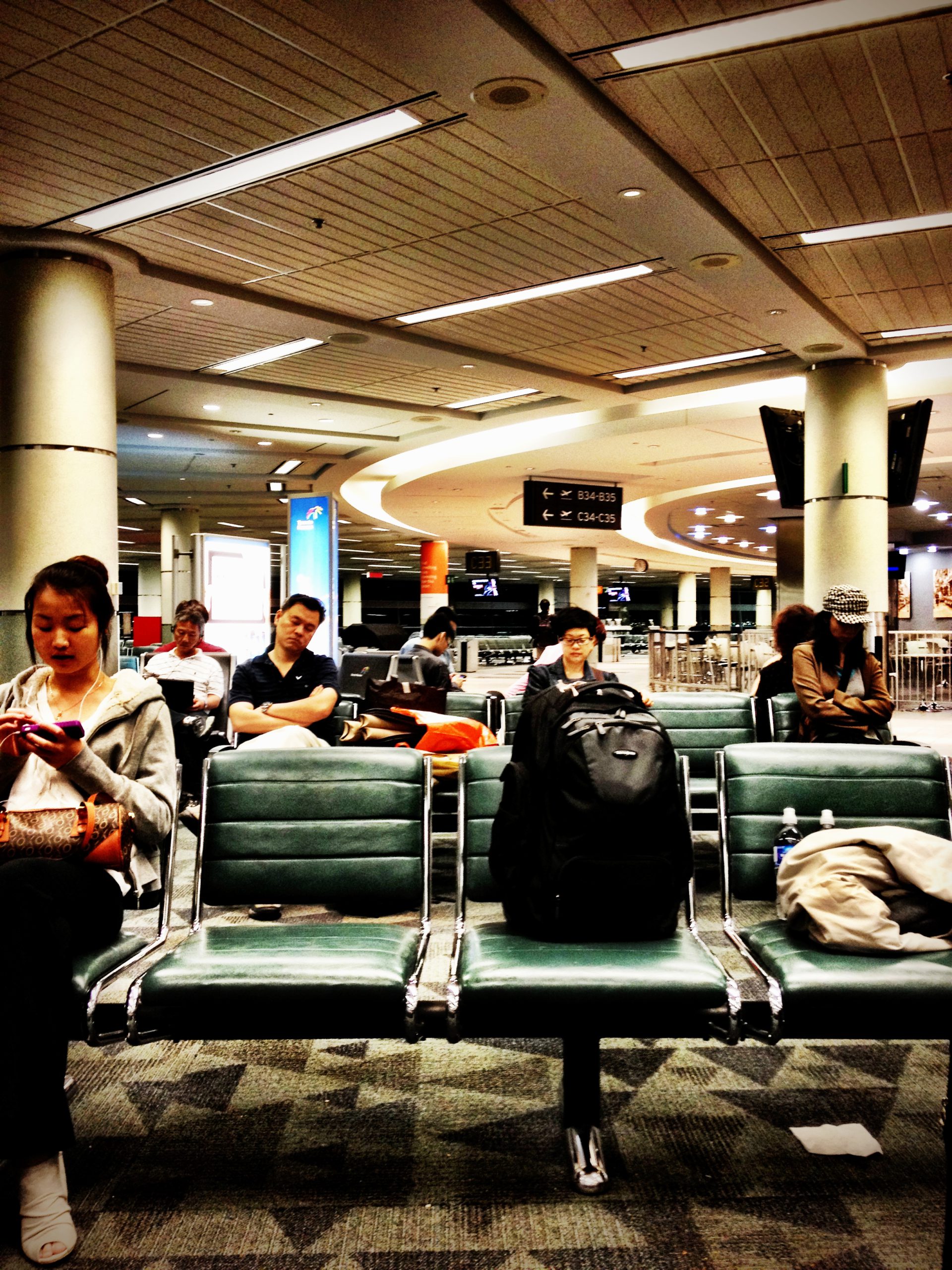
Waiting for our 1:40AM departure to Hong Kong. We arrive 5:30AM Sunday. I’ll miss out on Saturday.
-
Breakfast

Up early and off to Wan Chai for breakfast. A local establishment run singly by women. Congee and chow fun was on the menu.
-
Hotel Lobby
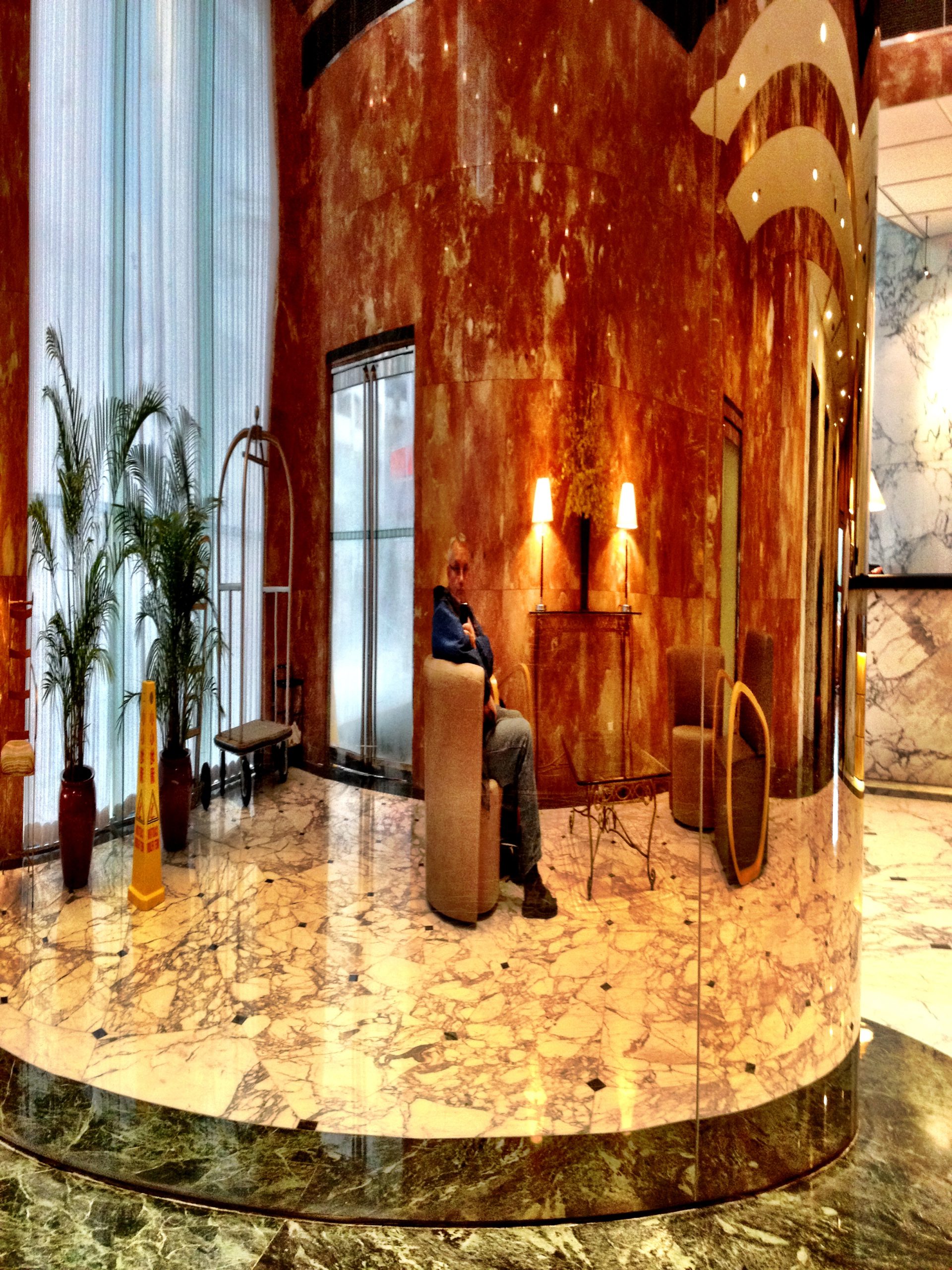
Waiting in the hotel lobby at the Garden View in Hong Kong. A little stretched and twisted after a 14.5 hour flight.
-
Hot Pot
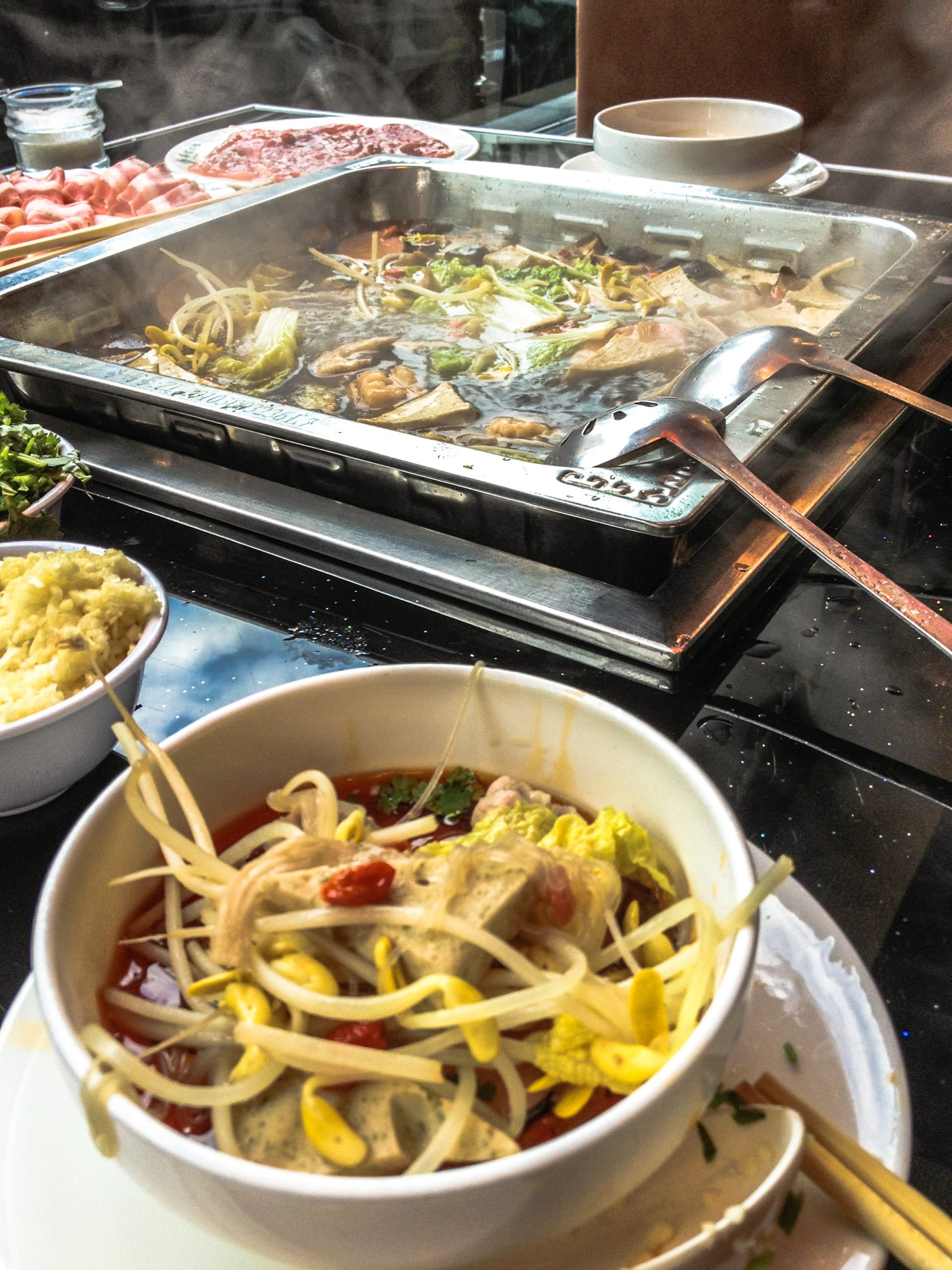
Nancy, our guide, advised that in Sichuan there are three things that are hot (spicy): the tea; the food; the girls. This evening we tried # 1 and 2.
-
Meishan
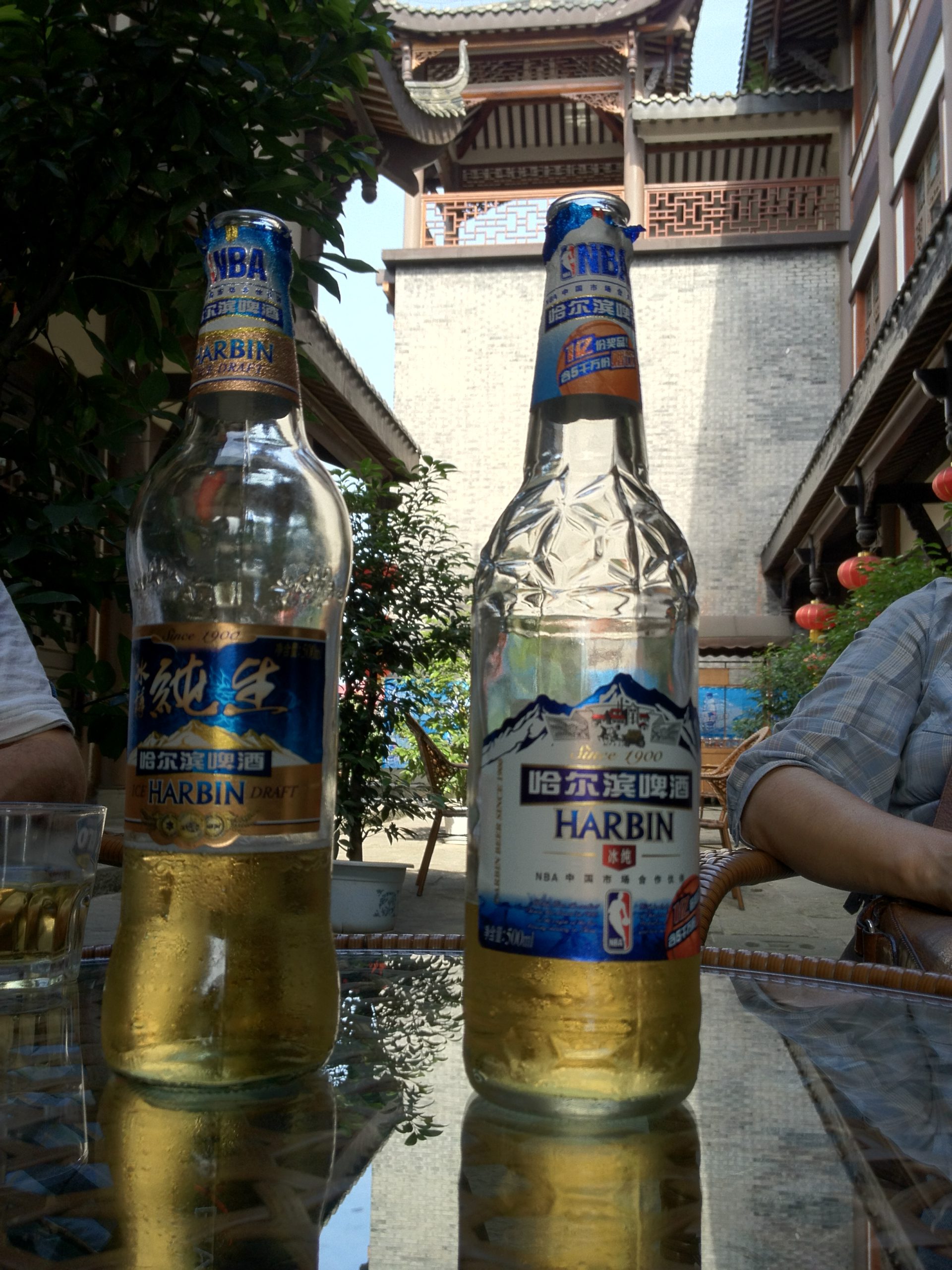
Meishan itself is a small town. The major attraction here is the Giant Buddha which we saw yesterday. Today we drive to Mt Emei. Both of these are considered UNESCO World Heritage sites. We walk around the area of the hotel however it was quite warm. Our hotel is adjacent to a monastery or more precisely…
-
Lunch in Shilin
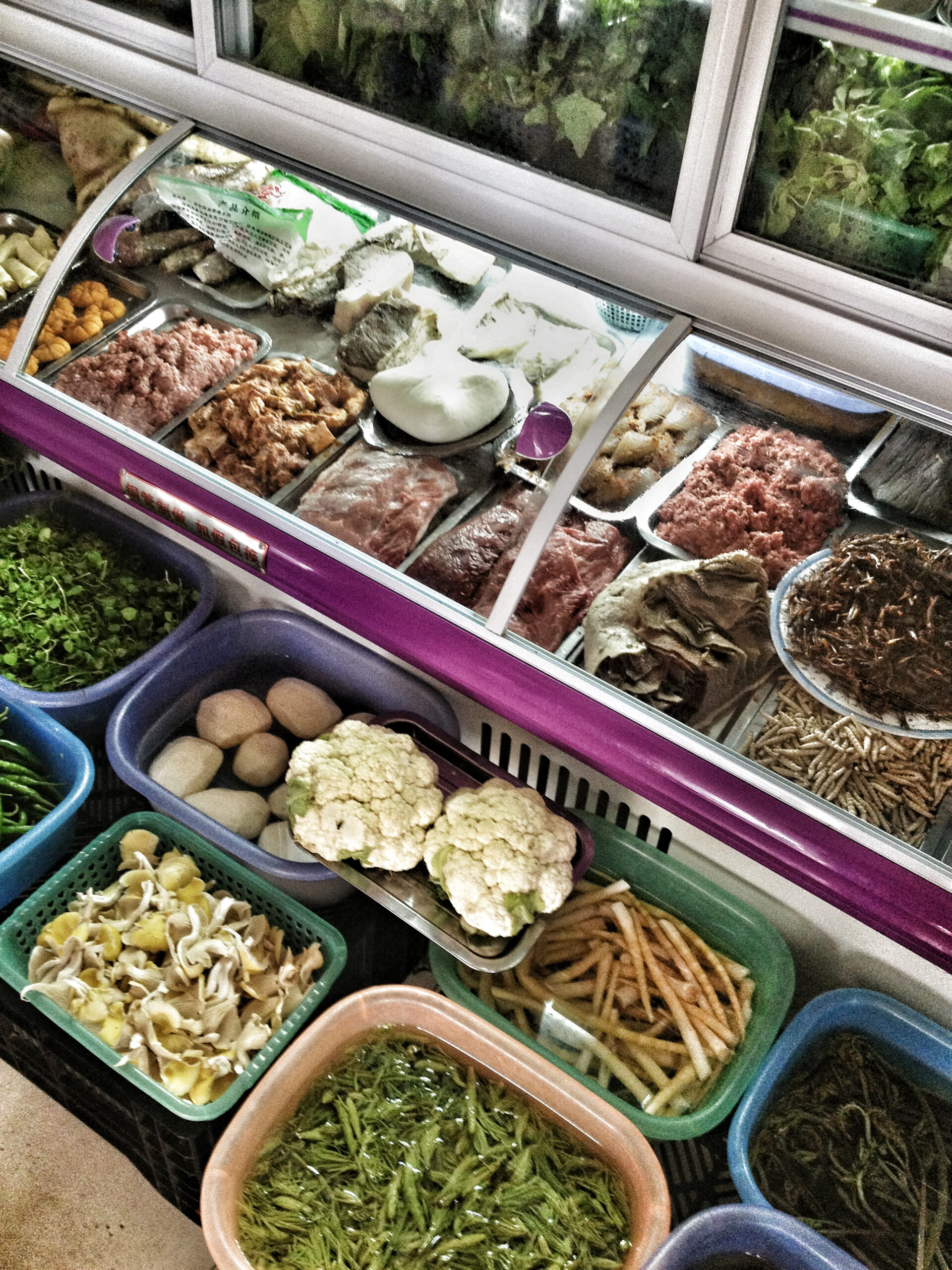
iPhone 4S For lunch today our guide took us to a little family-run restaurant. No menu; we picked the ingredients, specified the style (soup, stir fry…) and the restaurant prepared it. The highlights were a fried goat cheese, and a stir fry of a vegetable something like pea sprouts with egg.
-
Lamma Island
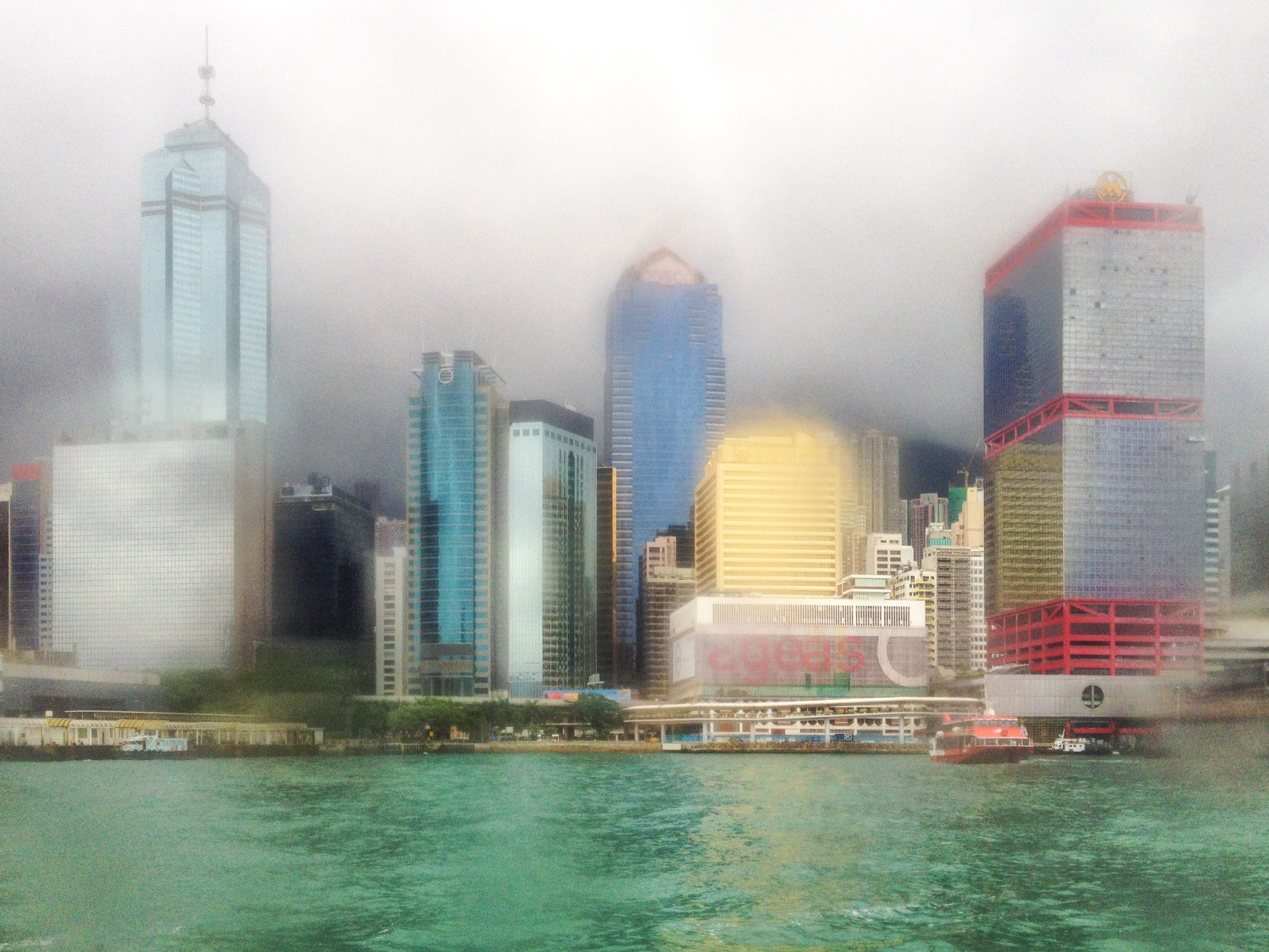
iPhone 4S This morning we journeyed out to Lamma Island. The island is a 30 minutes or so ferry ride from Hong Kong. It is a rural setting, largely parkland and a couple of small fishing villages. It is popular with “ex pats” because of its setting yet a reasonable commute to the city. The…
-
Victoria Peak
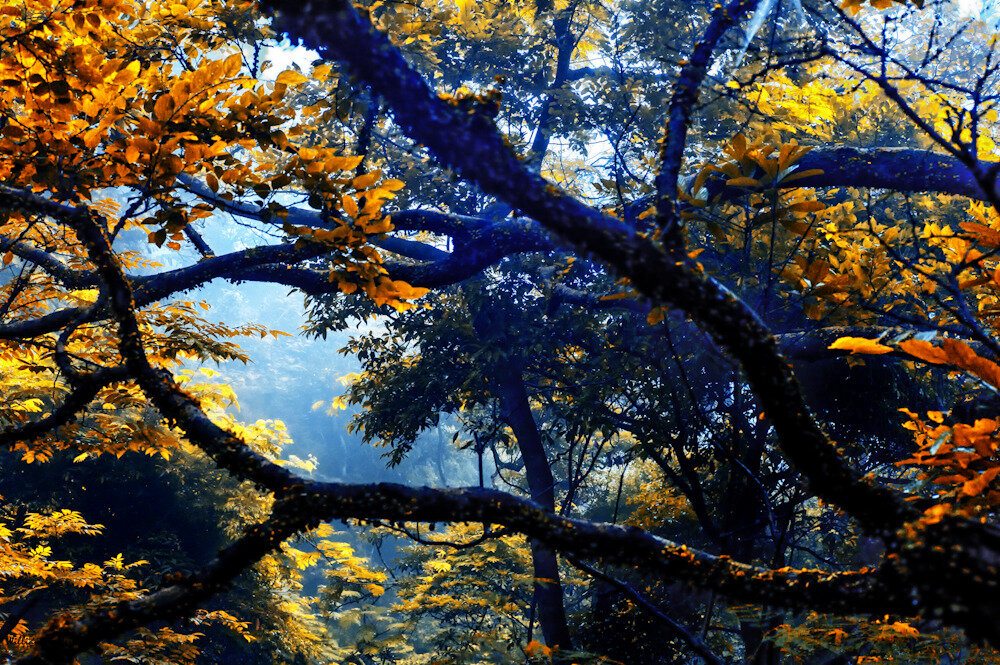
We arrived in Hong Kong Sunday May 27th early in the morning, giving us a full day in the city. While it was too early to check in, we did go to the hotel and drop off our luggage. From there is it was a short walk to the Peak Tram which took us to…
-
Aberdeen
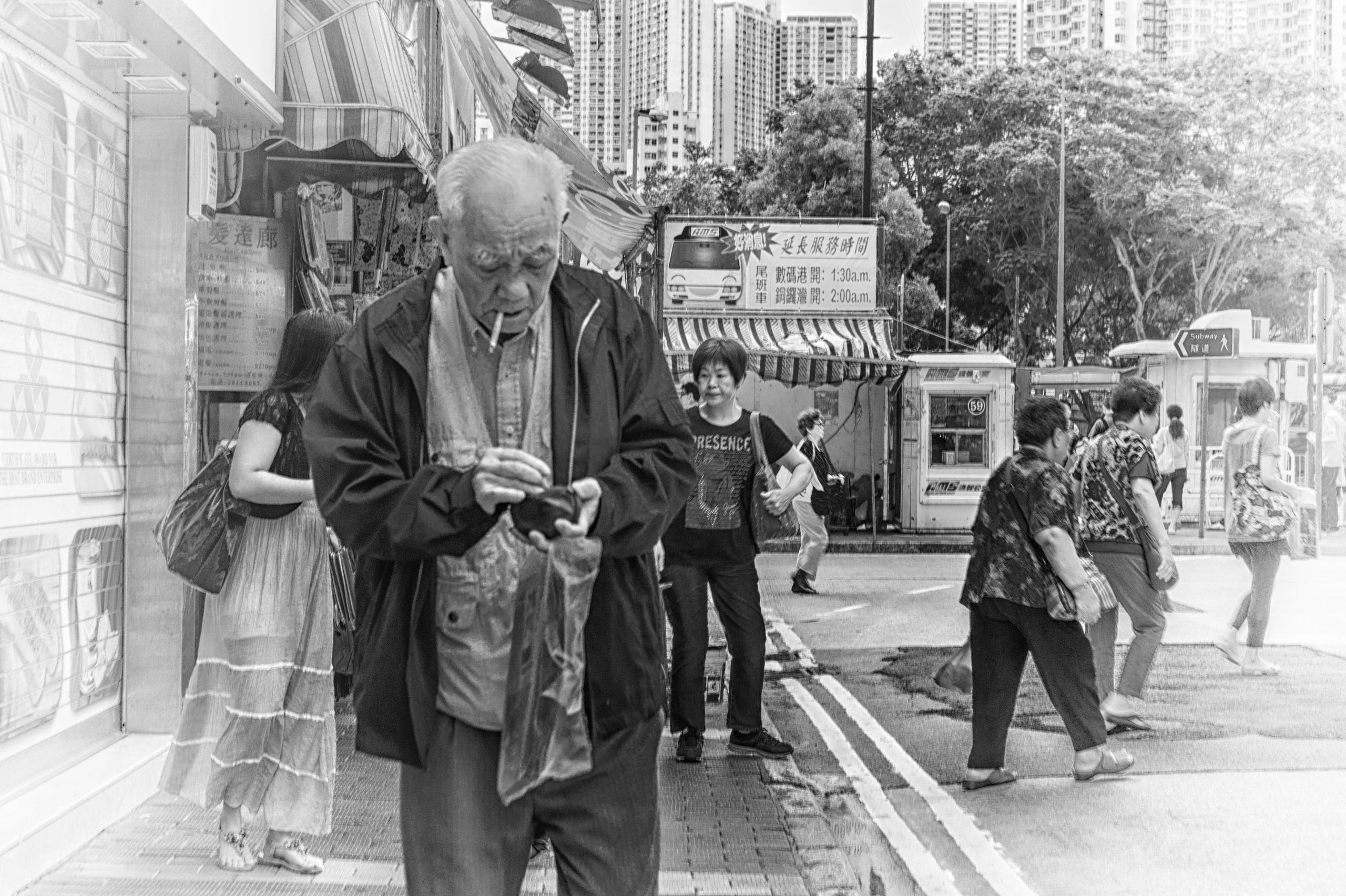
From the Victoria Peak trail we followed a branch down to the south side of Hong Kong Island to Aberdeen. There we took one of the free ferries to the Jumbo Floating Restaurant for Lunch. The Restaurant is situated in the harbour on what appears to be a large boat. I’m not sure it really…
-
Hong Kong Harbour
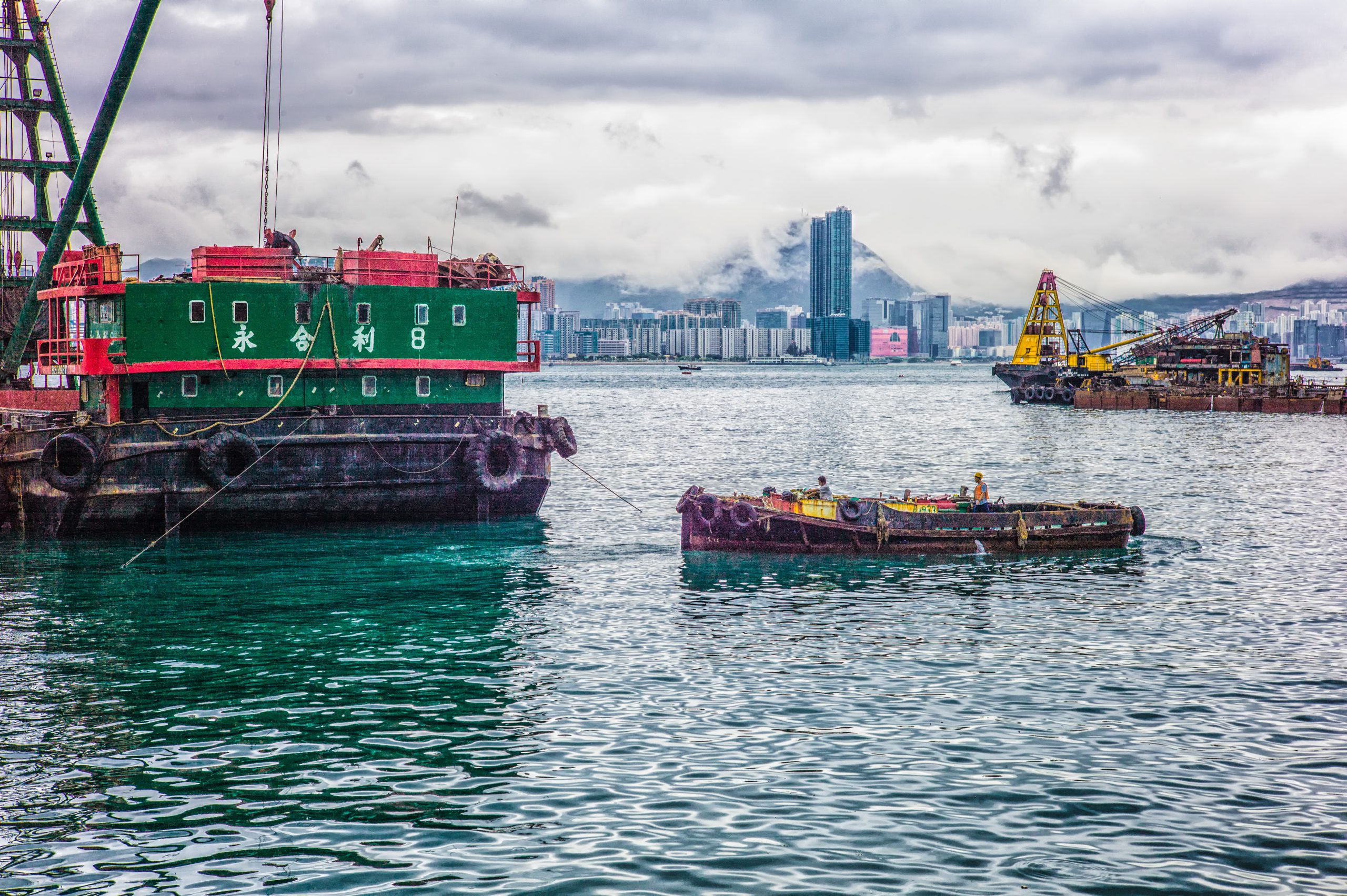
Harbours are interesting to me because of the water, the mix of heavy equipment and all the activity. Hong Kong’s is especially interesting because of the size and volume. As well it is very much a part of the city: it is highly visible, and most people will interact with it regularly so it is…
-
Harbour Crossing
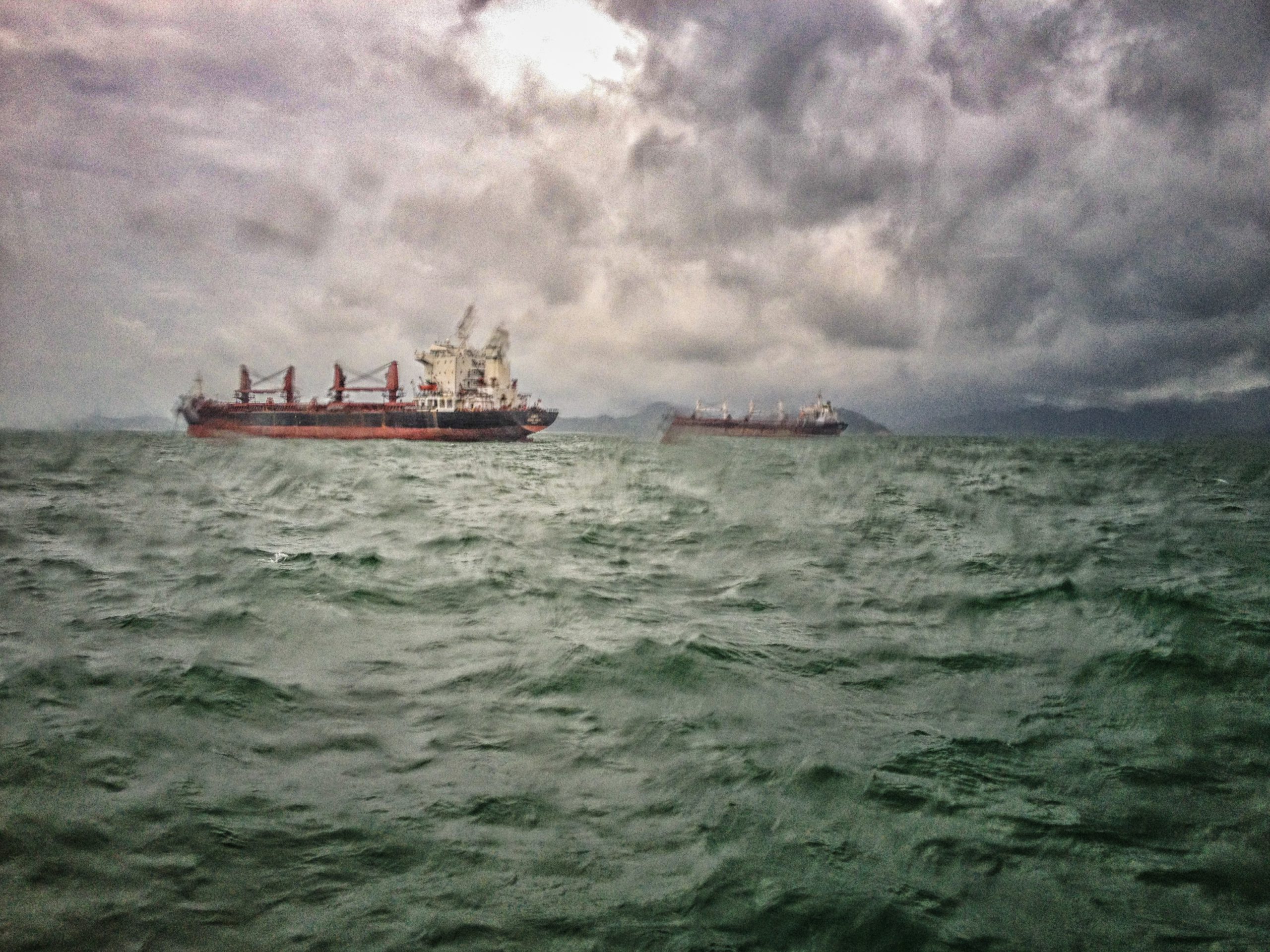
Hong Kong Harbour stretches between Hong Kong Island and the mainland. Crossing it is a routine part of many people’s life. It can be traversed by subway and car (through tunnels) or by ferries. As well, ferries to the outer islands leave from the Harbour. iPhone 4SiPhone 4S These shots were taken from the…
-
Food Cycle
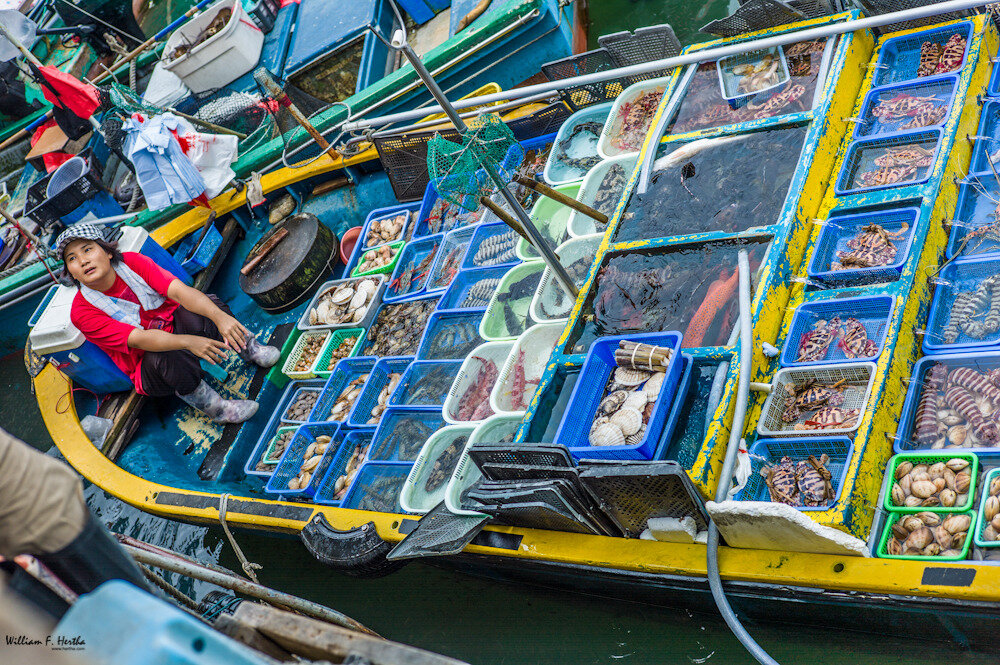
In Sai Kung, a fishing village in the Hong Kong Territories, one can see the fishing boats in the harbour, buy sea food from them and take it home to prepare. Alternatively, one can go to a local Sai Kung restaurant (which has bought the sea food from the fishermen) and select live fish and…
-
City Contrasts
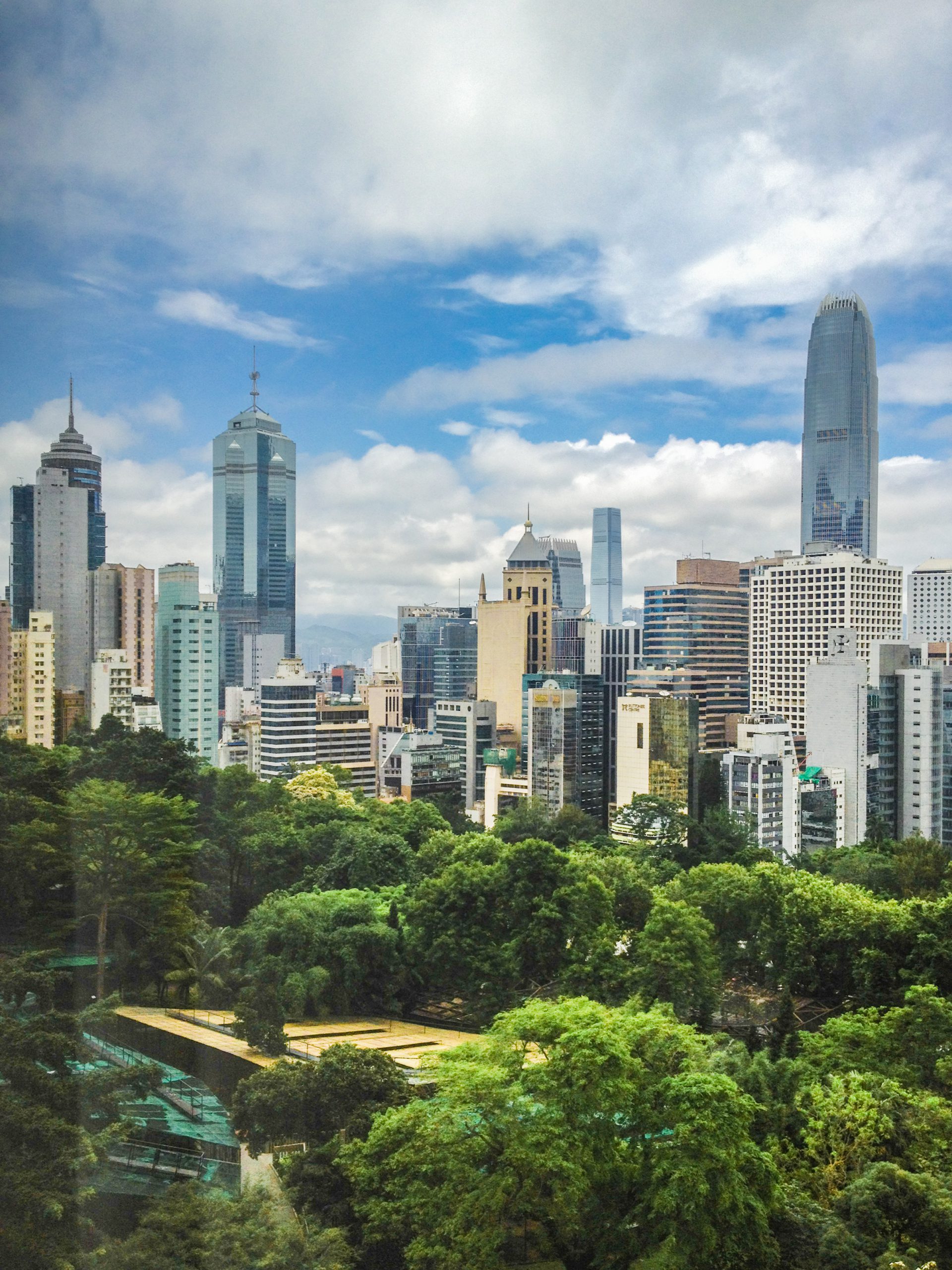
Most large, modern cities will present contrasting images: what they are; what they were, etc. In Hong Kong one can see the integration of park land and buildings as in this shot taken from the window of our hotel room: iPhone 4S The seamless integration of business and residential: Leica M9, Leica Summicron-M 50mm, ISO…
-
Shopping
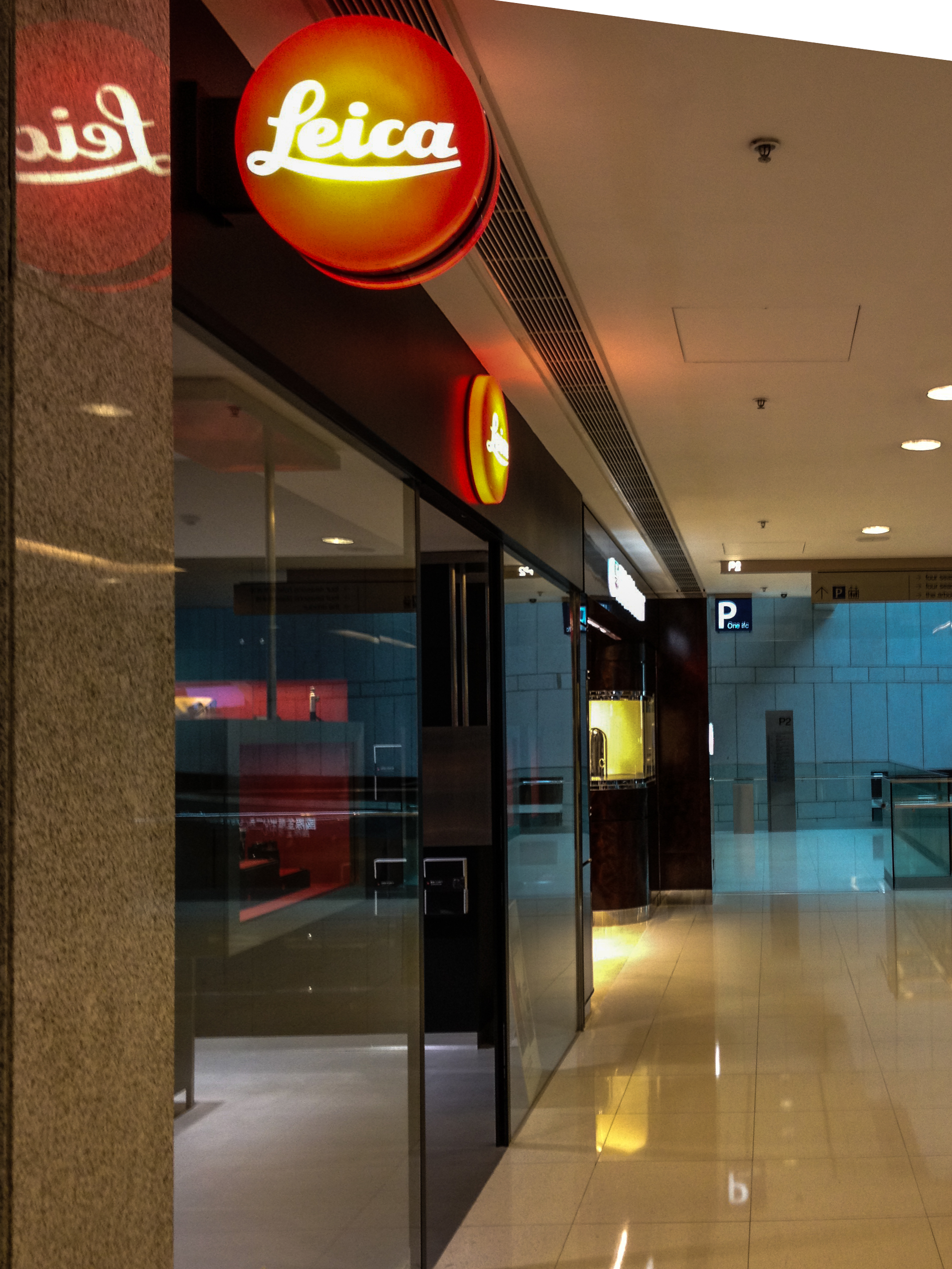
Hong Kong offers a wide range of shopping experiences from the ultimate in boutique stores in high-end malls (the IFC), to box stores right on the street. The Leica Store in IFC (International Finance Centre). Along each dimension of style, design, lighting, colour, cleanliness, such a store is at the opposite end of the spectrum…
-
Street Scenes
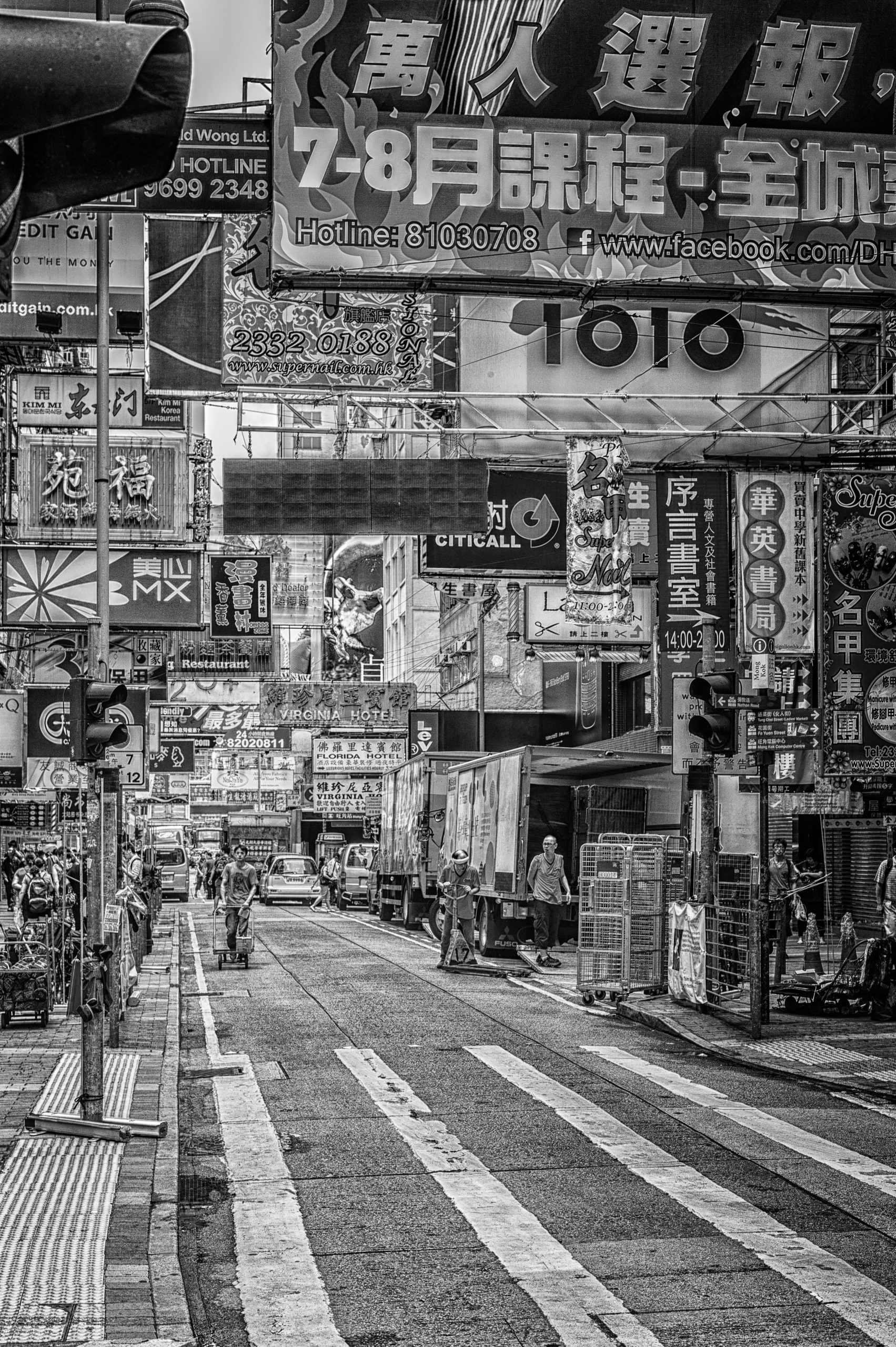
There’s nothing like going into the older areas of Hong Kong, that have not undergone the building boom as in Central, Causeway Bay etc. to see the congestion of people, things and activity. Street Photography is often about capturing people; here it is everything; the whole environment.
-
Street Scenes
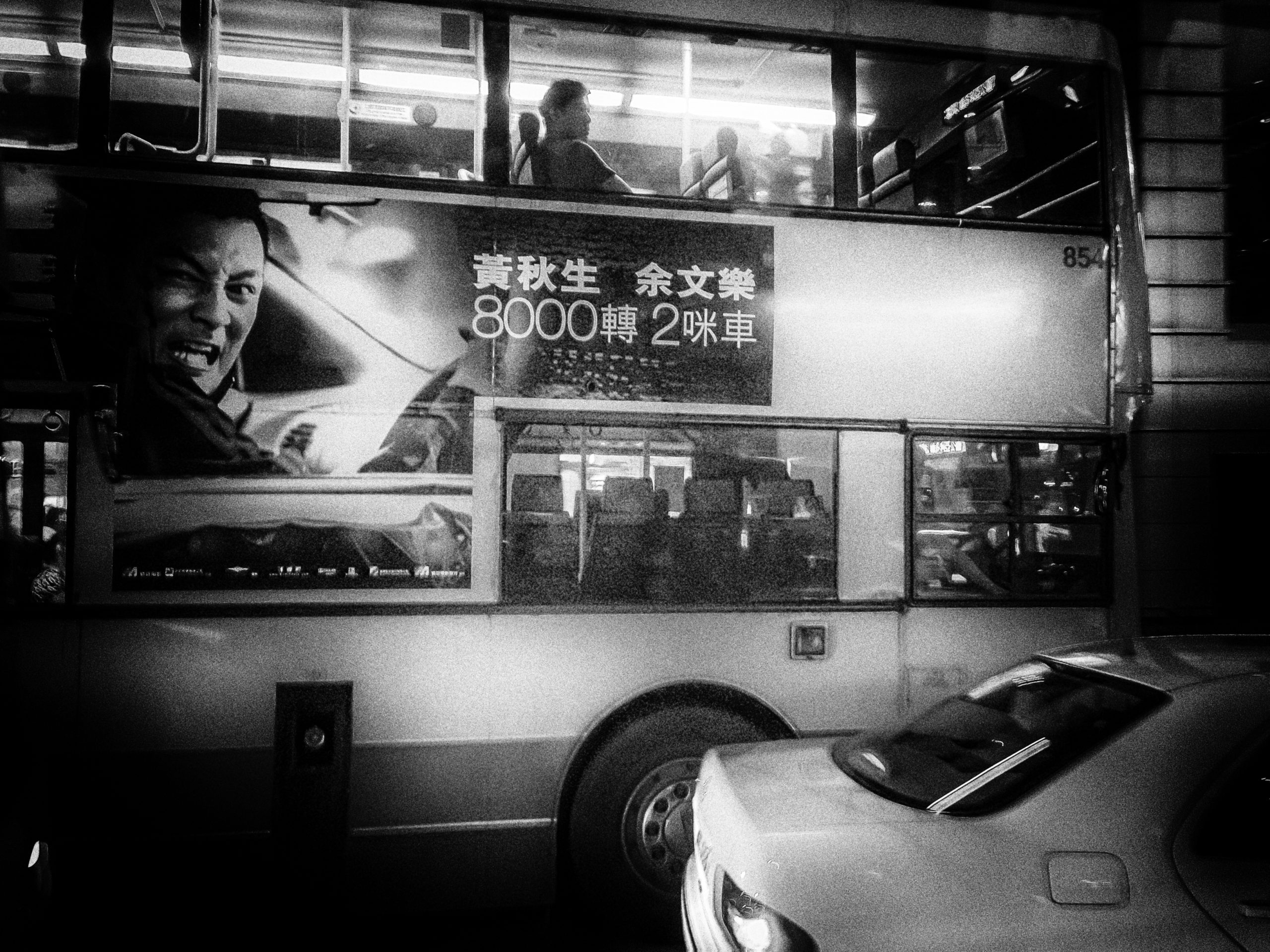
A comment on the traffic? iPhone 4s
-
Street Scenes
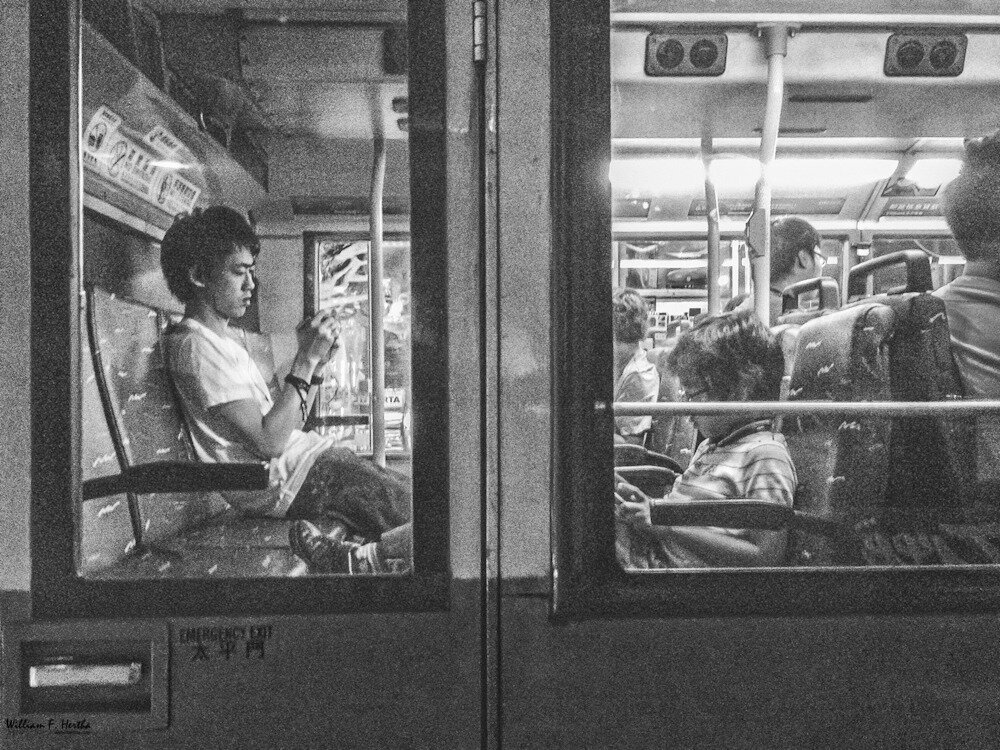
Maybe Microsoft was right: too many people spend too much of their time with their face in a smart phone. This blight is everywhere. iPhone 4s
-
Street Scenes
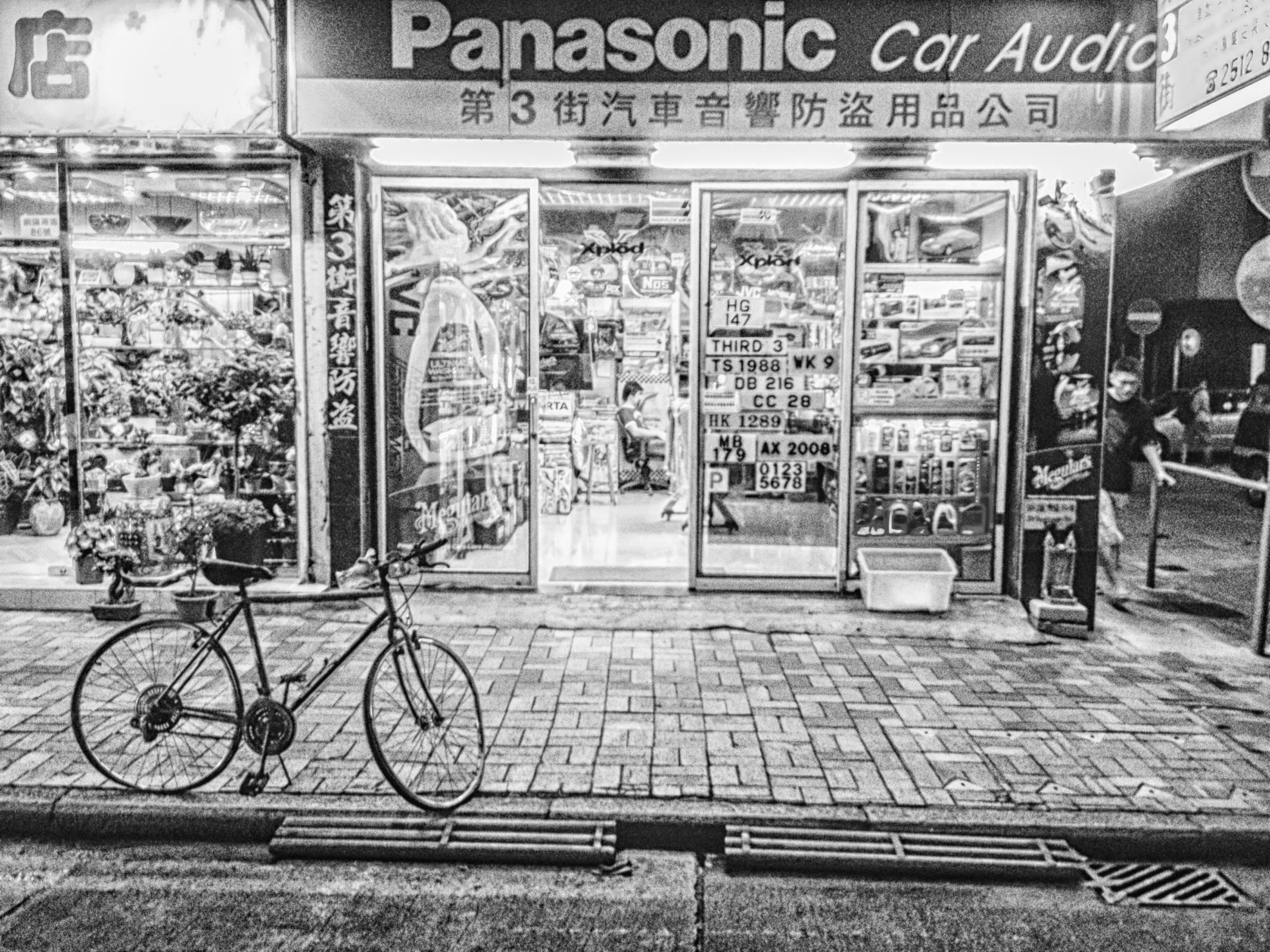
iPhone 4s
-
Red Curtains
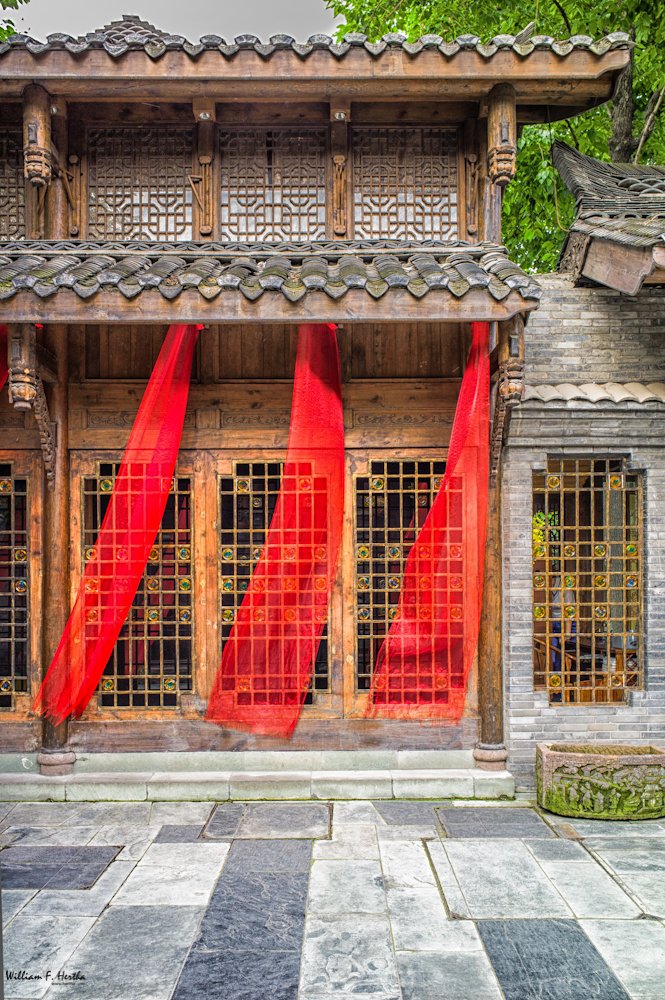
We arrived in Chengdu early afternoon. Our hotel was located a short walk from the old town, which is where we went. As we saw in many places, China is undergoing a massive renovation and its old towns are being refreshed.
-
Hot Pot

On our return to the hotel from the old town, we stopped into a restaurant for dinner. Sichuan food is typically highly spiced, although we did order an unspiced soup as the base of the hot pot.
-
Giant Buddha
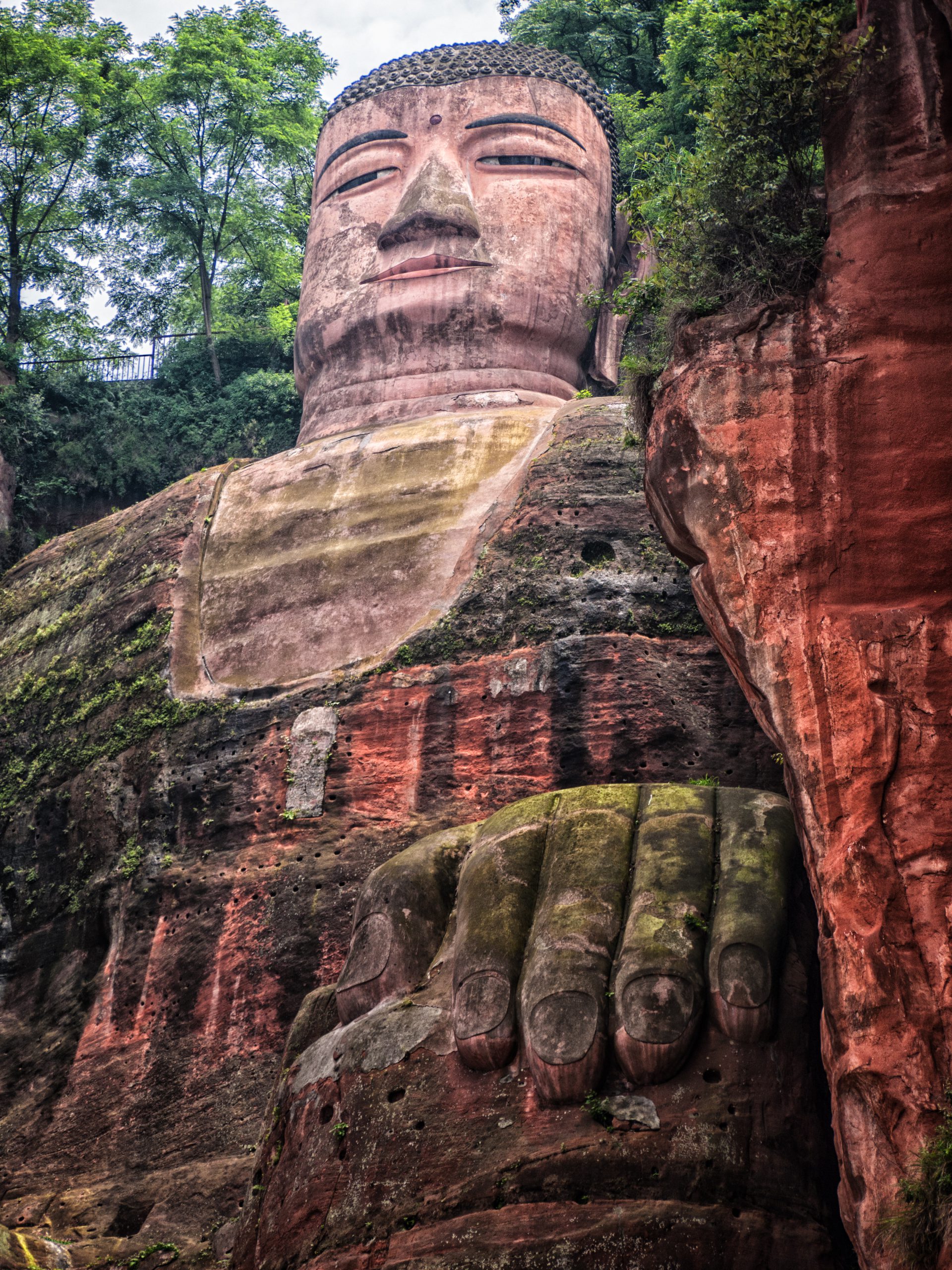
From Chengdu we drove to Leshan where we boarded a ferry that took us to the Giant Buddha. The Statue is some 71 meters and is situated facing the river. We didn’t leave the ferry; it just drove past a couple of times. I took pictures. I was impressed by the finger nails.
-
The Giant Buddha’s Smile
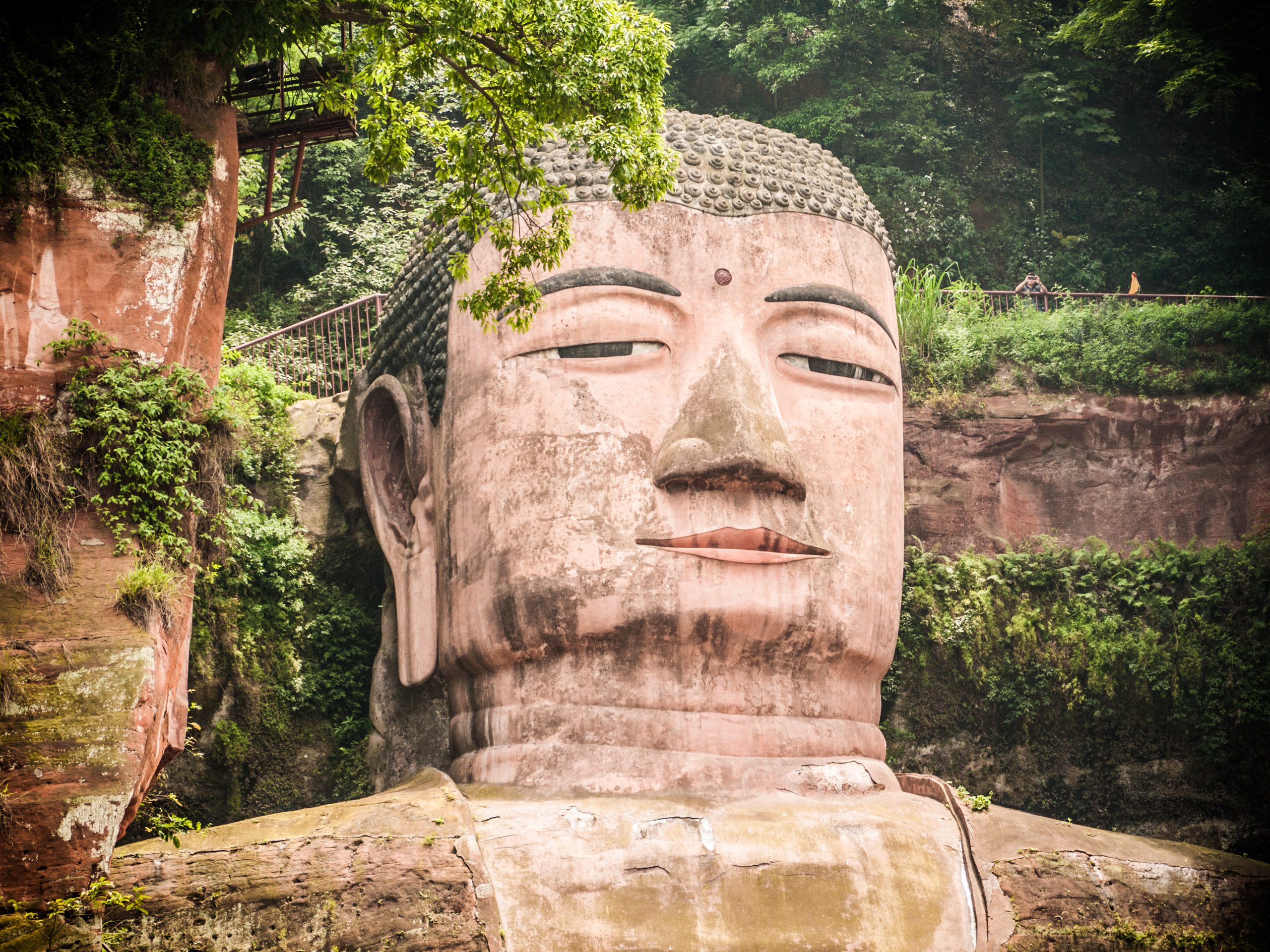
The expression of size in meters can be somewhat abstract and hard to visualize. This shot has a person in it to provide some sense of scale. Panasonic DMC-G1, Lumix G Vario 45-200/f4.0-5.6, ISO 100, f/4.9, 1/400 sec
-
Temple at Mt Emei
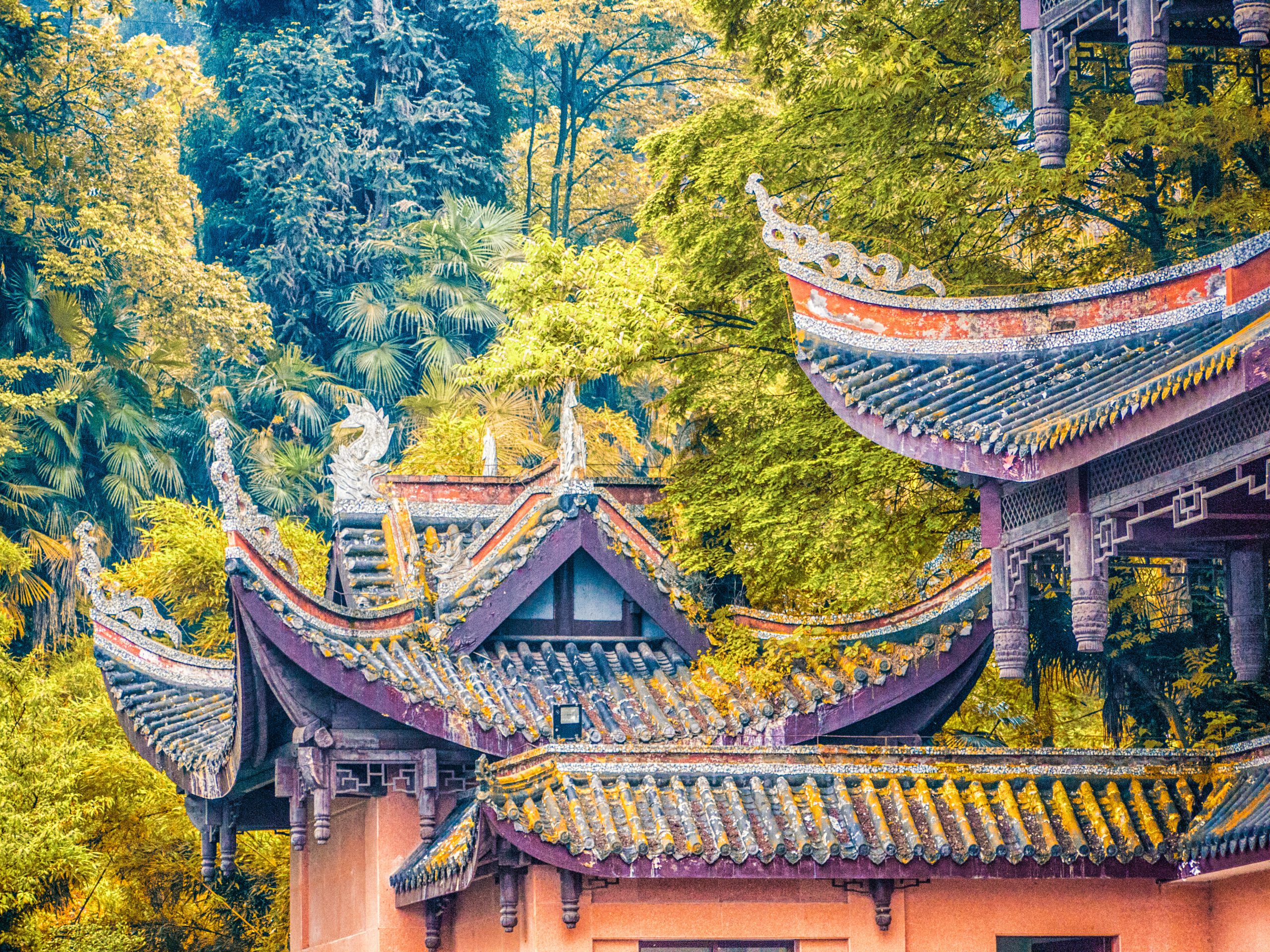
Mt. Emei near Leshan can offer a spectacular view when it’s not raining and or clouded over. We arrived to clouds that turned to rain as we got to the top of the mountain. Panasonic DMC-G1, Lumix G Vario 45-200/f4.0-5.6, ISO 320, f/4.4, 1/100 sec
-
Candles on Mt. Emei
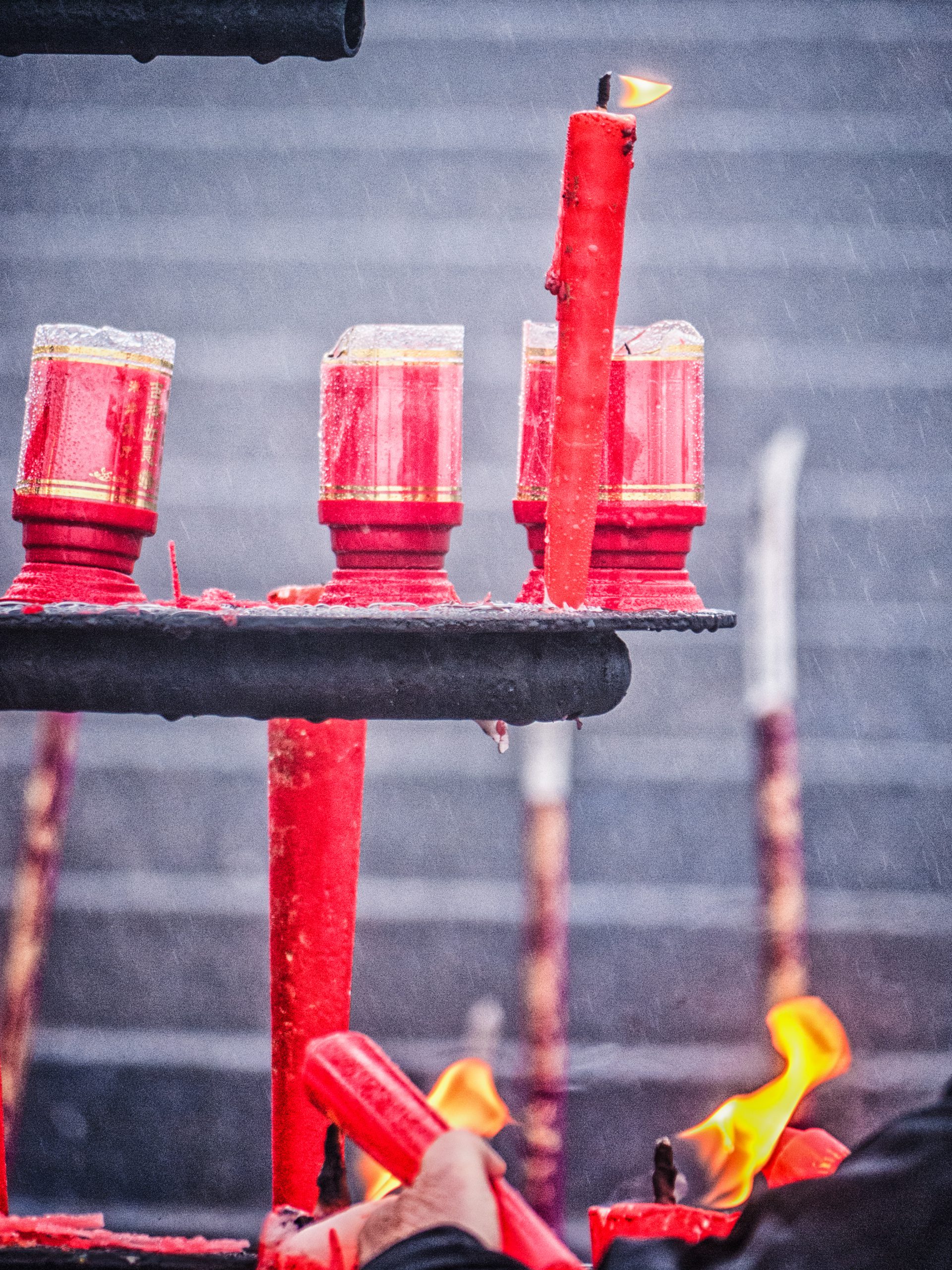
At the top of Mt. Emei is the Temple of the Golden Buddha. Outside the temple are many prayer candles. The rain was pretty heavy at the top; evidence of that can be seen in the background of this shot.
-
Mirror Lake
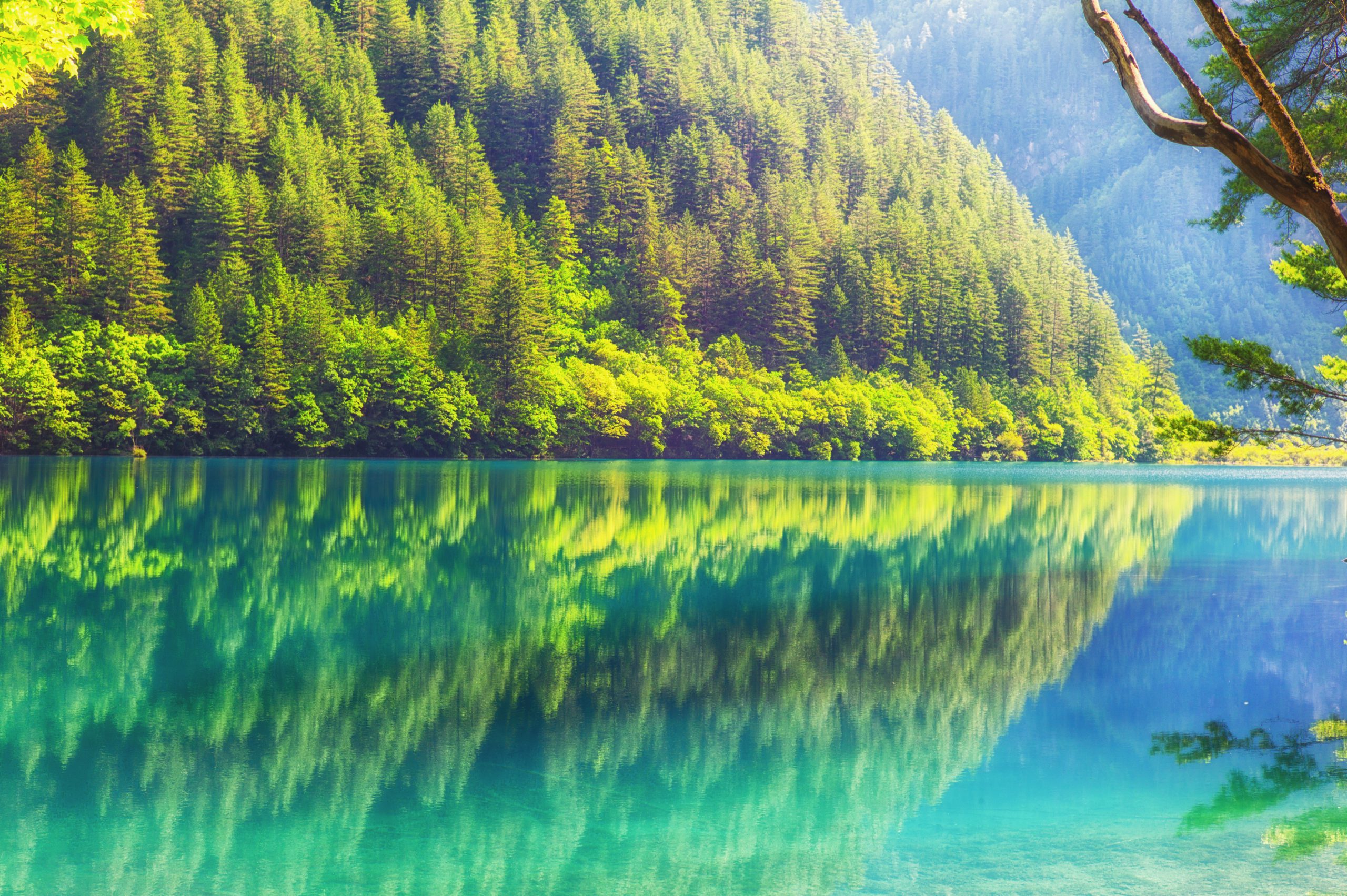
After Mt. Emei we travelled North to Jiuzhaigou (literally “Nine Village Valley”) which takes its name from the nine Tibetan villages along its length. Here we visited Jiuzhai Valley National Park. One of our first stops in the Park was Mirror Lake: Leica M9, Leica Summicron-M 50mm, ISO 160, f/8.0, 1/90 sec The Park is well…
-
Mirror Lake
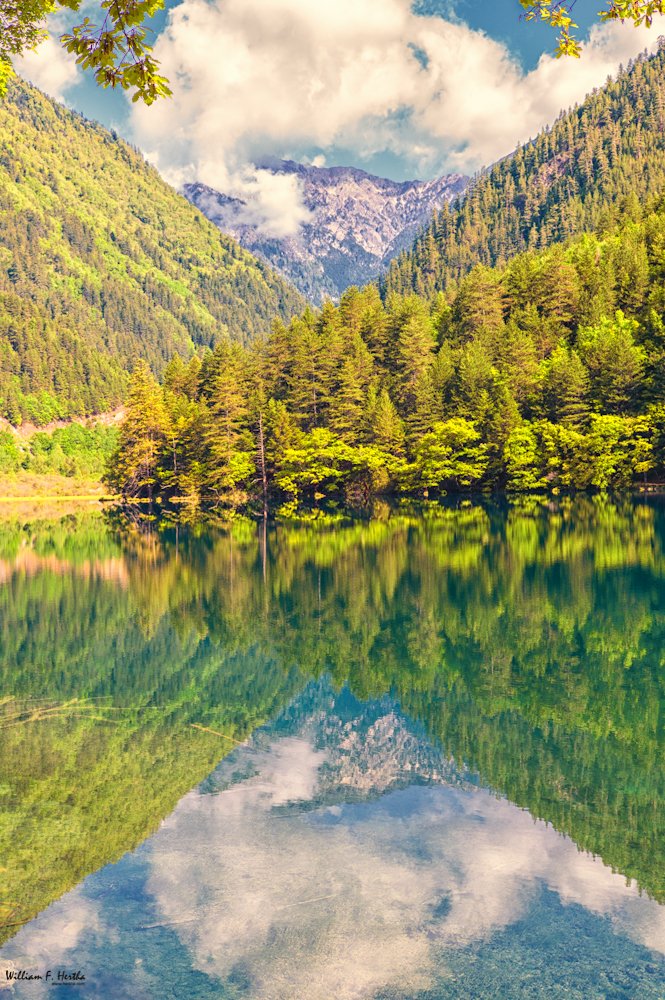
Another point of view of this lake in Jiuzhai Valley National Park:
-
Waterfalls
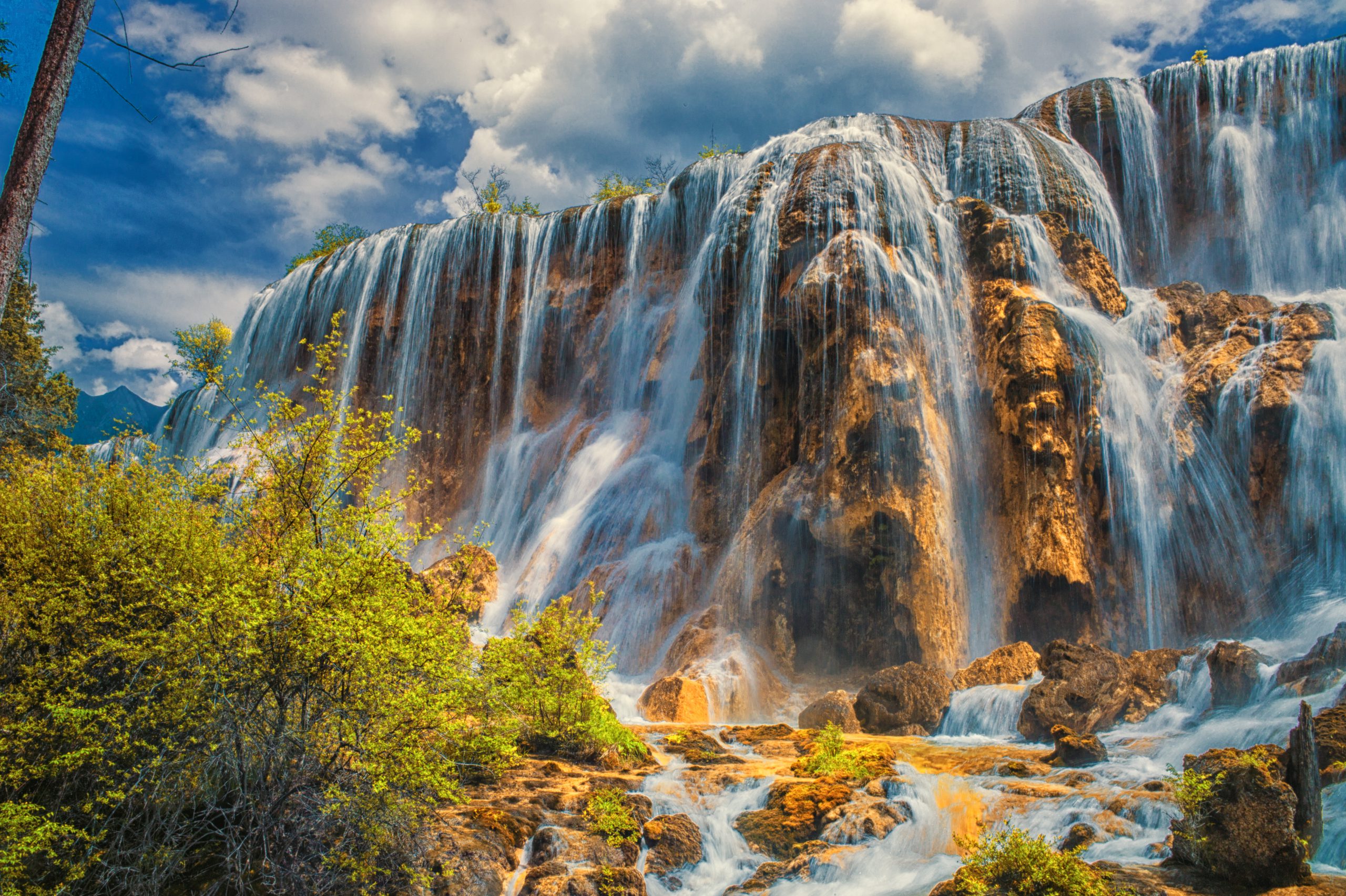
The Park in Jiuzhaigou is also well-known for its waterfalls. All of them are tightly bound with the forests that surround them. There is little room around them.
-
Waterfalls
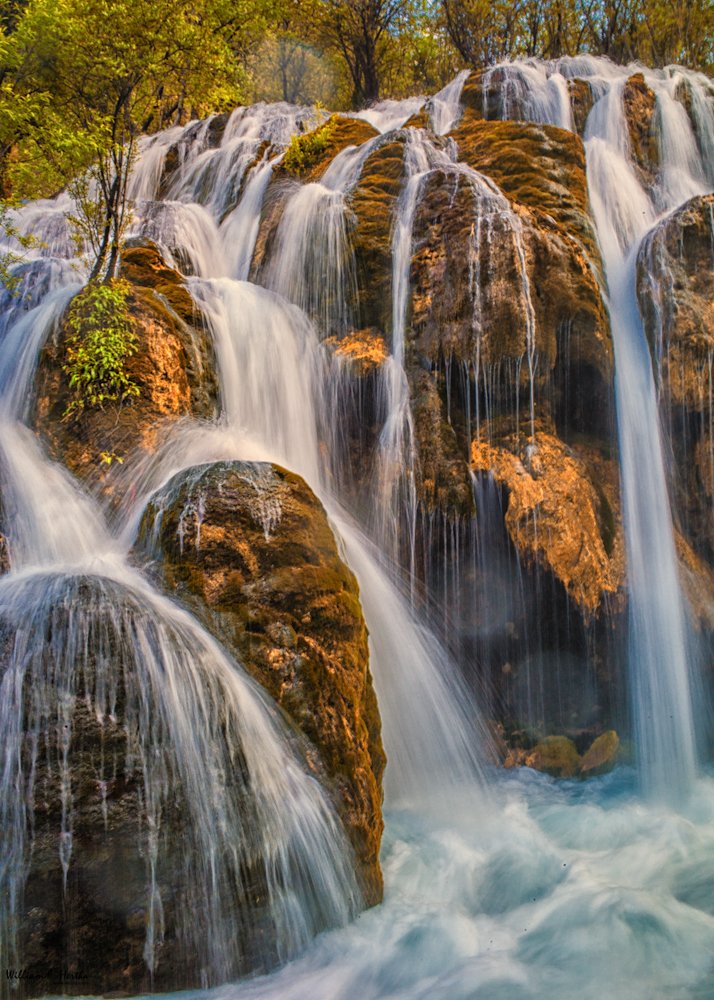
This was one of the last shots I took that day, but it is one of my favourites because of the pattern of water and rock
-
An old Tibetian Cottage
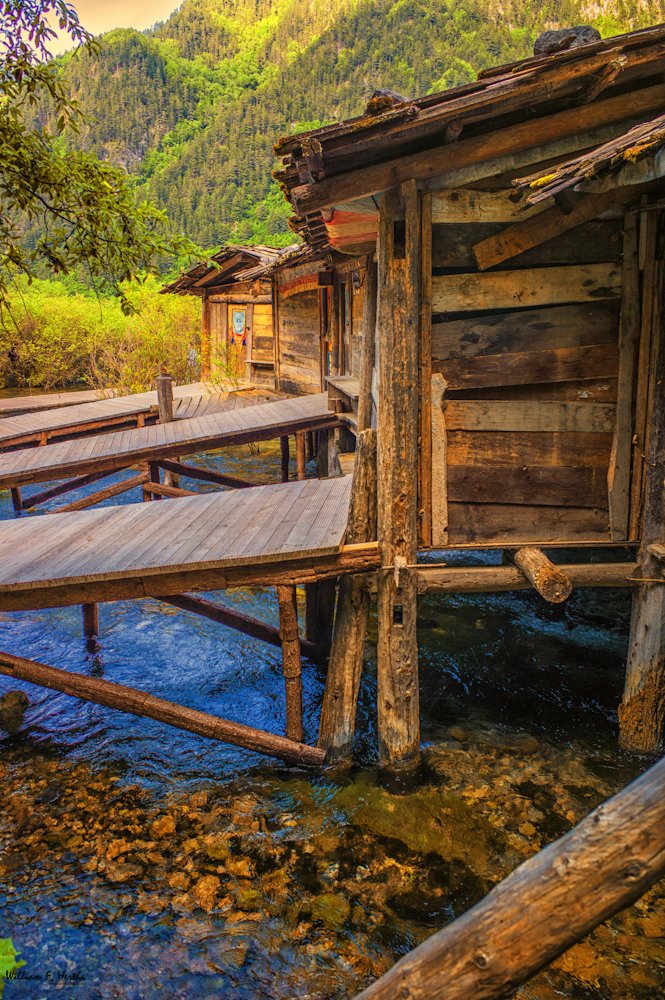
Along one of the rivers connecting the lakes feeding the waterfalls was this stand of vacant cottages.
-
Mystery of Tibet

After spending the day walking among the rivers, lakes and waterfalls of Juizhaigou we attended a musical. Our guide apologized as he was only able to get seats in the last row, but this turned out to be a positive as it allowed me to standup and take pictures not having to worry about people…
-
Huanglong National Park
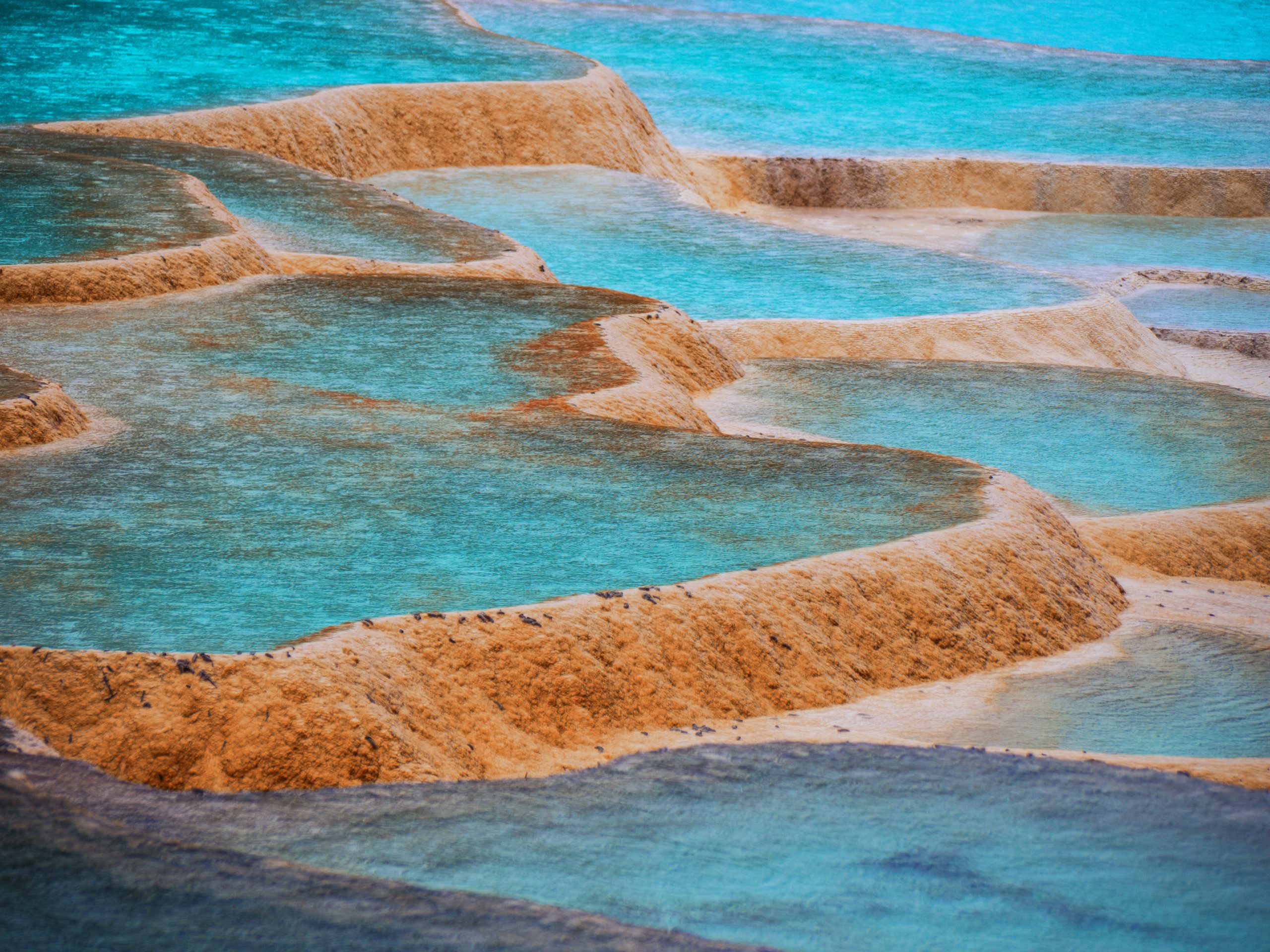
In contrast to Jiuzhai Valley National Park, Huanglong National Park was a bit of a one-trick pony. The highlight of the park are the terraced lakes and ponds. These extend over a large part of the mountain for several kilometres down its side.
-
Huanglong National Park
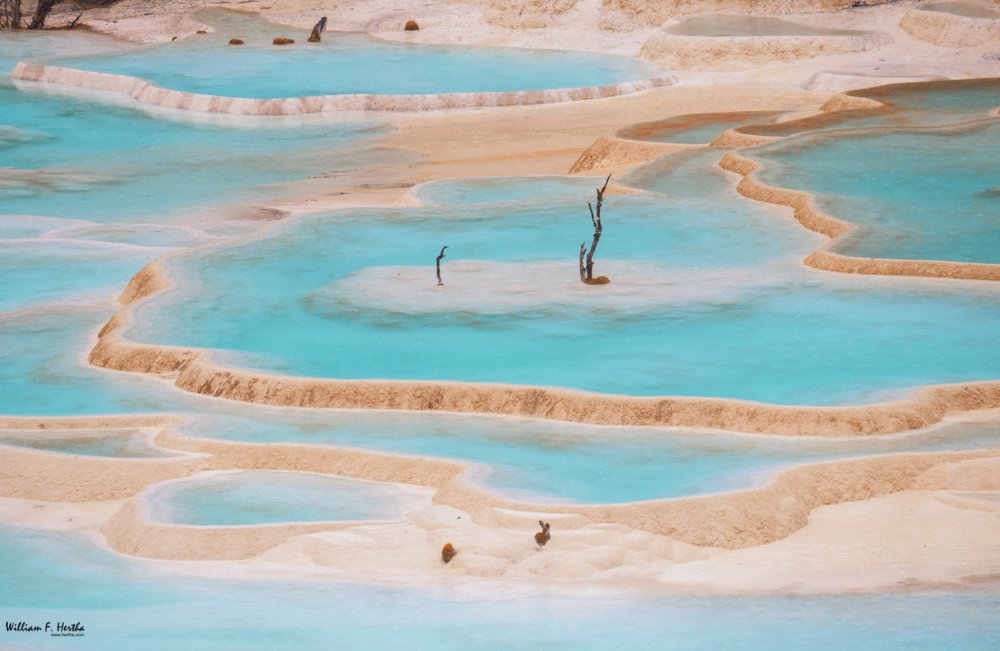
The terraced lakes are of course formed naturally. Yet even through the randomness of natural processes emerges some surrealistic results.
-
Between Flights in Chengdu

There was no direct flight from Jiuzhaigou to our next destination, Kunming so we stopped over in Chengdu for a few hours. But not really enough time to leave the airport and go into town. So I did what I do: take pictures …
-
Shilin “Stone Forest”
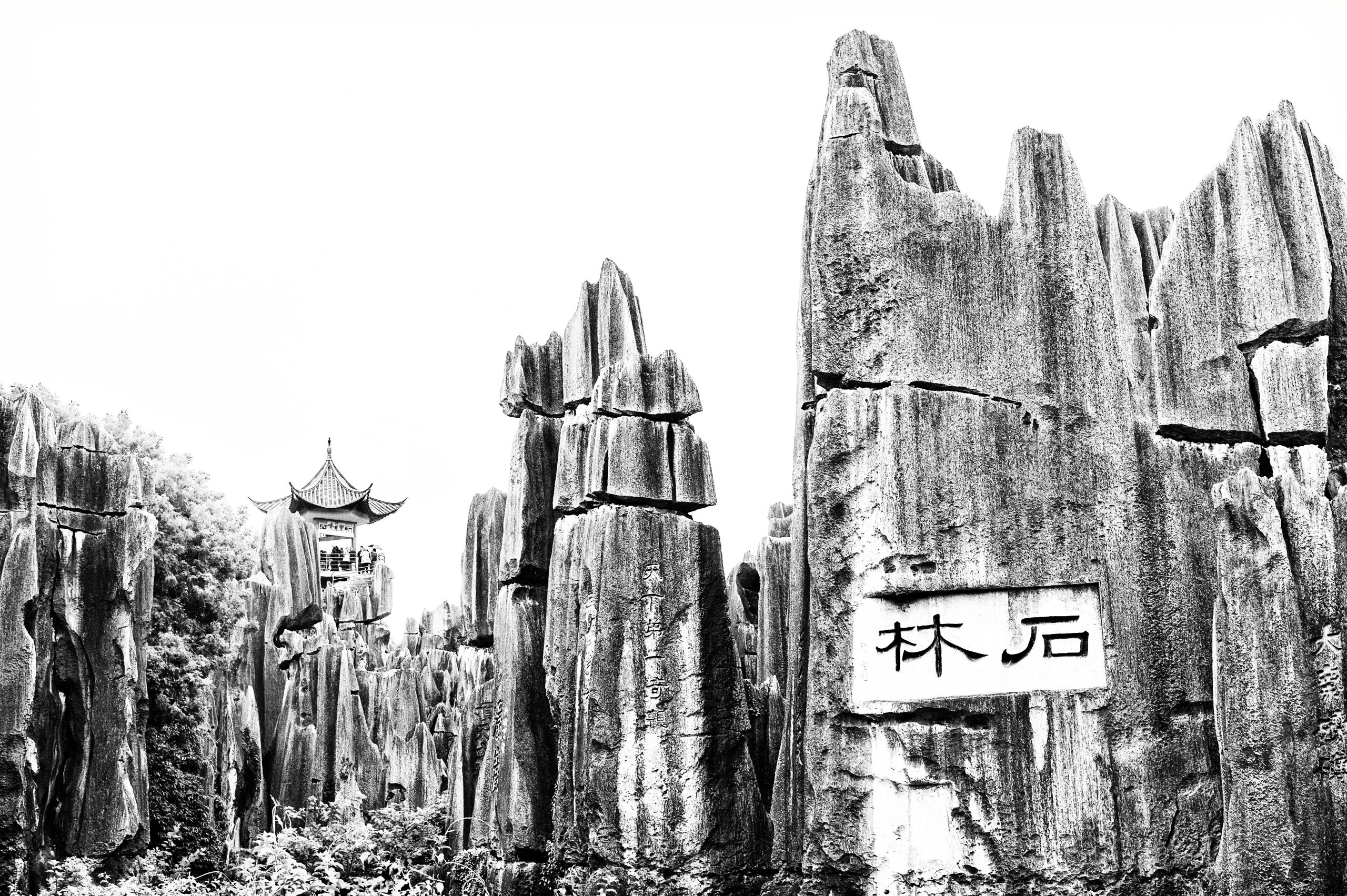
Shilin is the site of a well-known geological formation called the Stone Forest; pillars of stone emerge from the ground like trees. While it is interesting to see, capturing it in photographs is difficult.
-
Dragon Gate
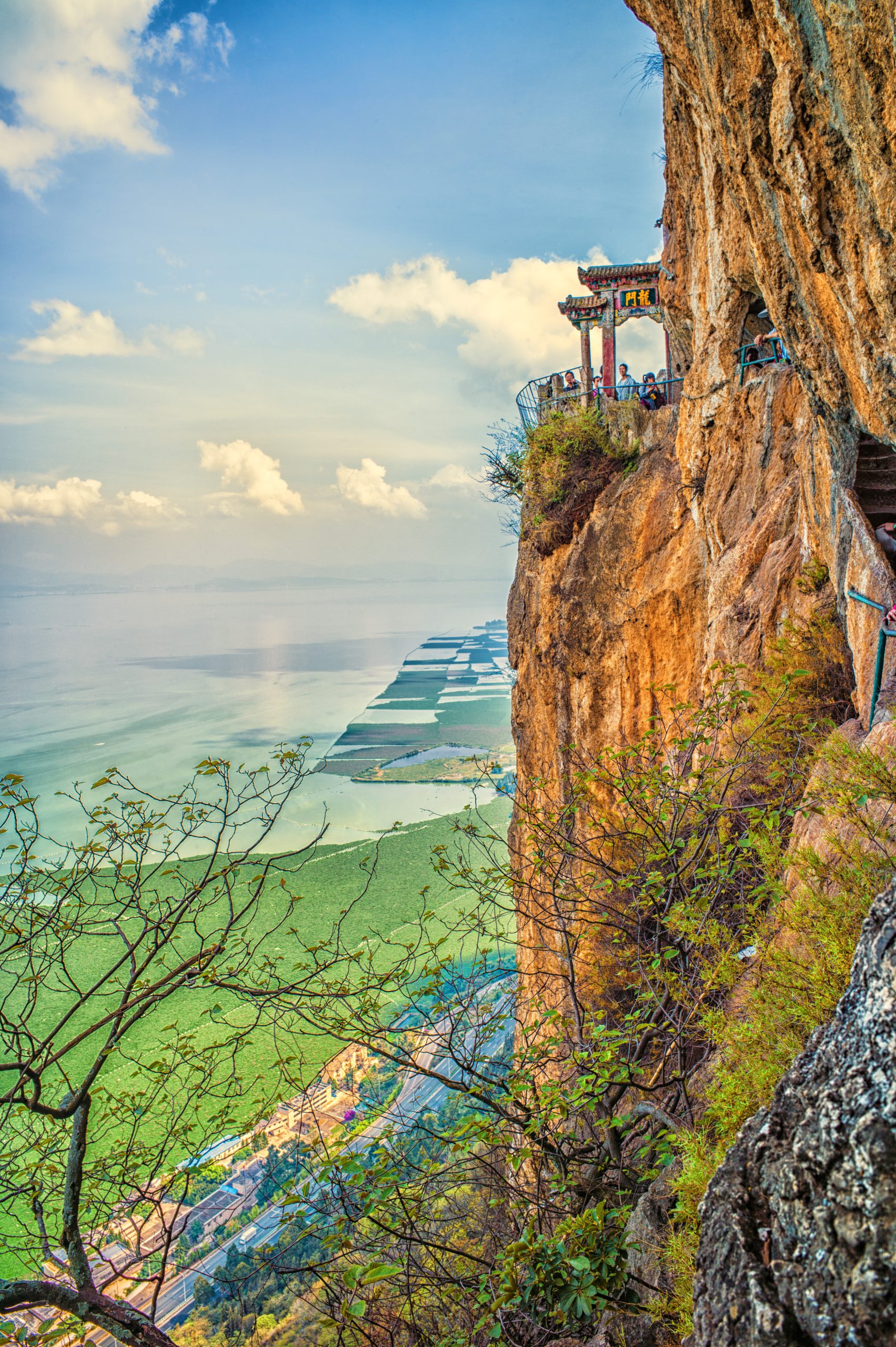
After Shilin we returned back to Kunming to a site call West Hill. Notable for its view of Dianchi Lake and the temple.
-
West Hill
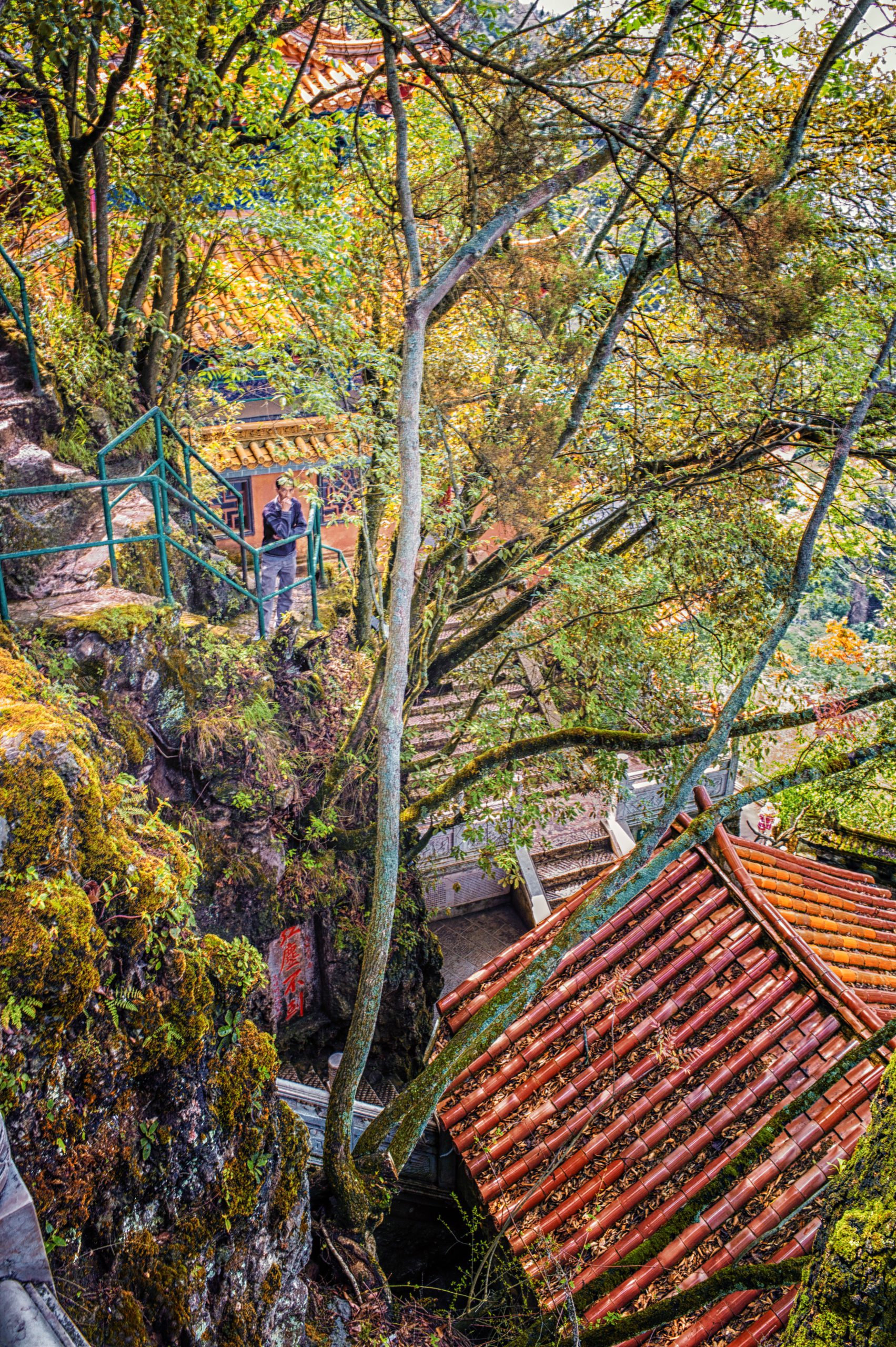
Unlike many of the areas we visited, West Hill was relatively quiet and free from the mobs of tourists. The trails are closer to the top of the mountain. We reached them by bus and chairlift. From the departure point we walked the paths that offered views of the Lake and Kunming beyond. There…
-
Tea
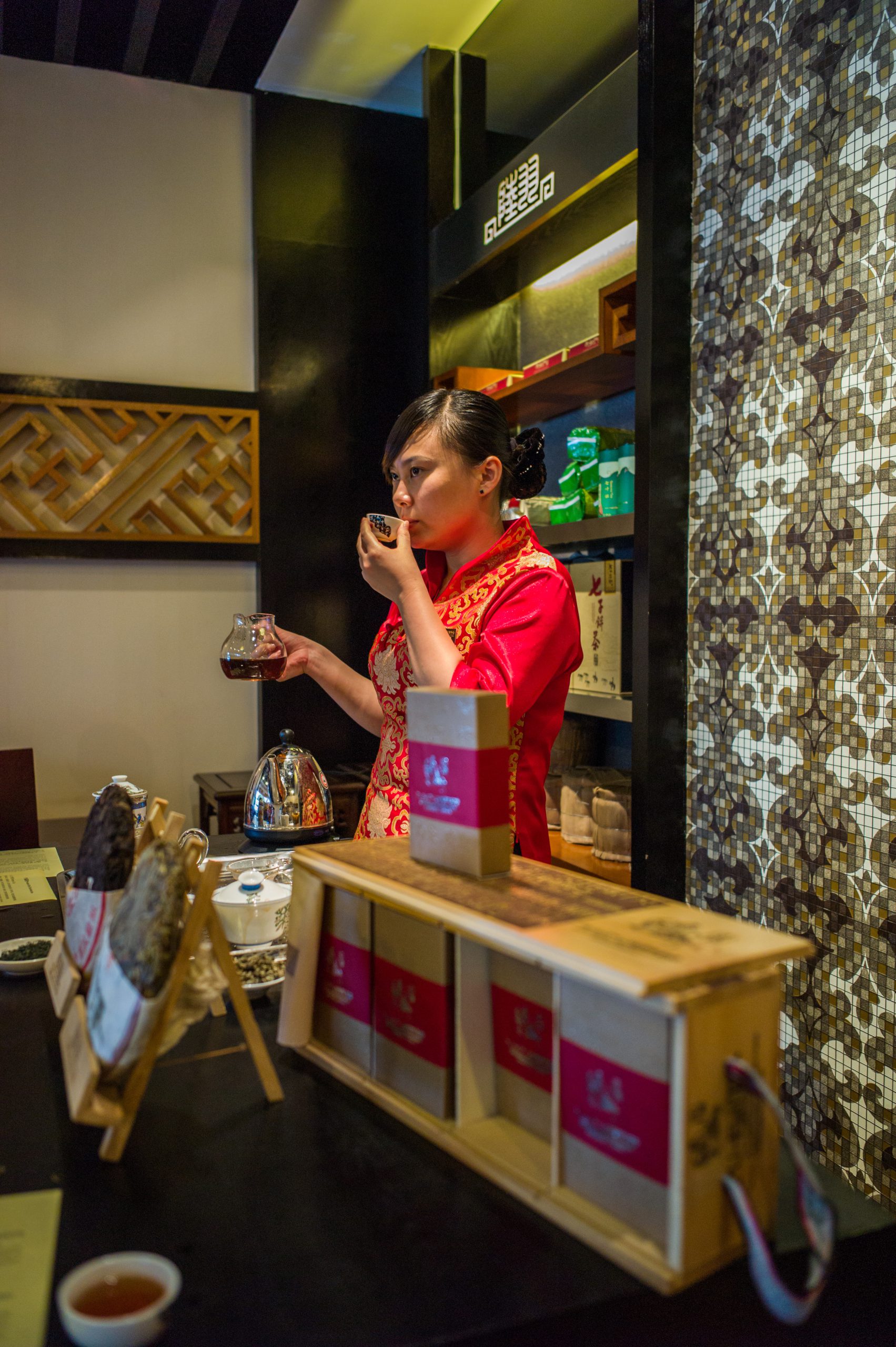
As with our previous trips to China we have hired guides and drivers to take us through the main part of our trip. The reasons are partly a hang over from many years ago when travel in China was more easily navigated with a tour, coupled with ensuring effective use of time. The downside is…
-
Flutes
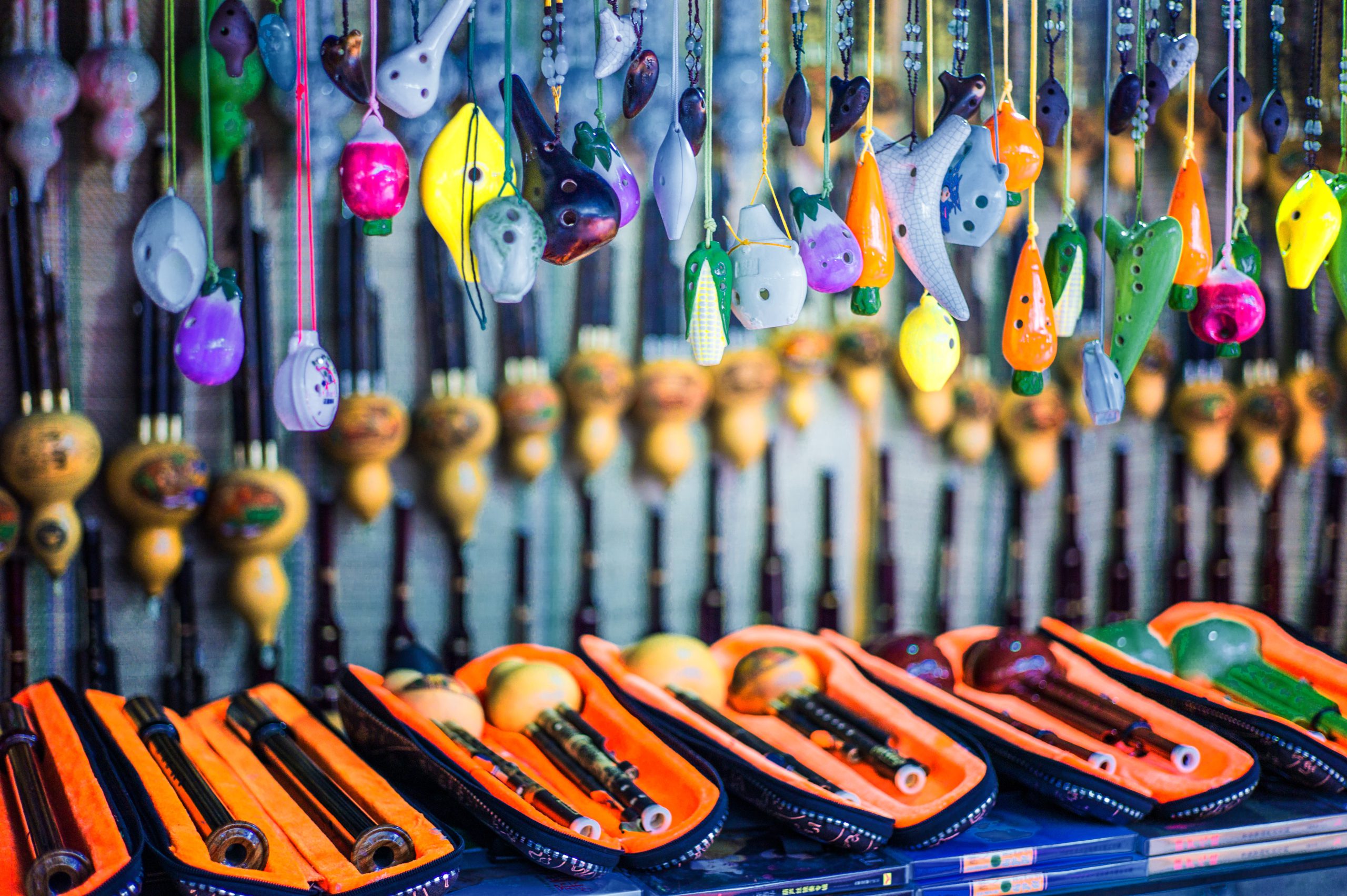
Near our hotel in Kunming was a little market. In the little market were many little stores. Among these was a flute (and other little trinkets) store.
-
Dali, Enroute to Lijiang
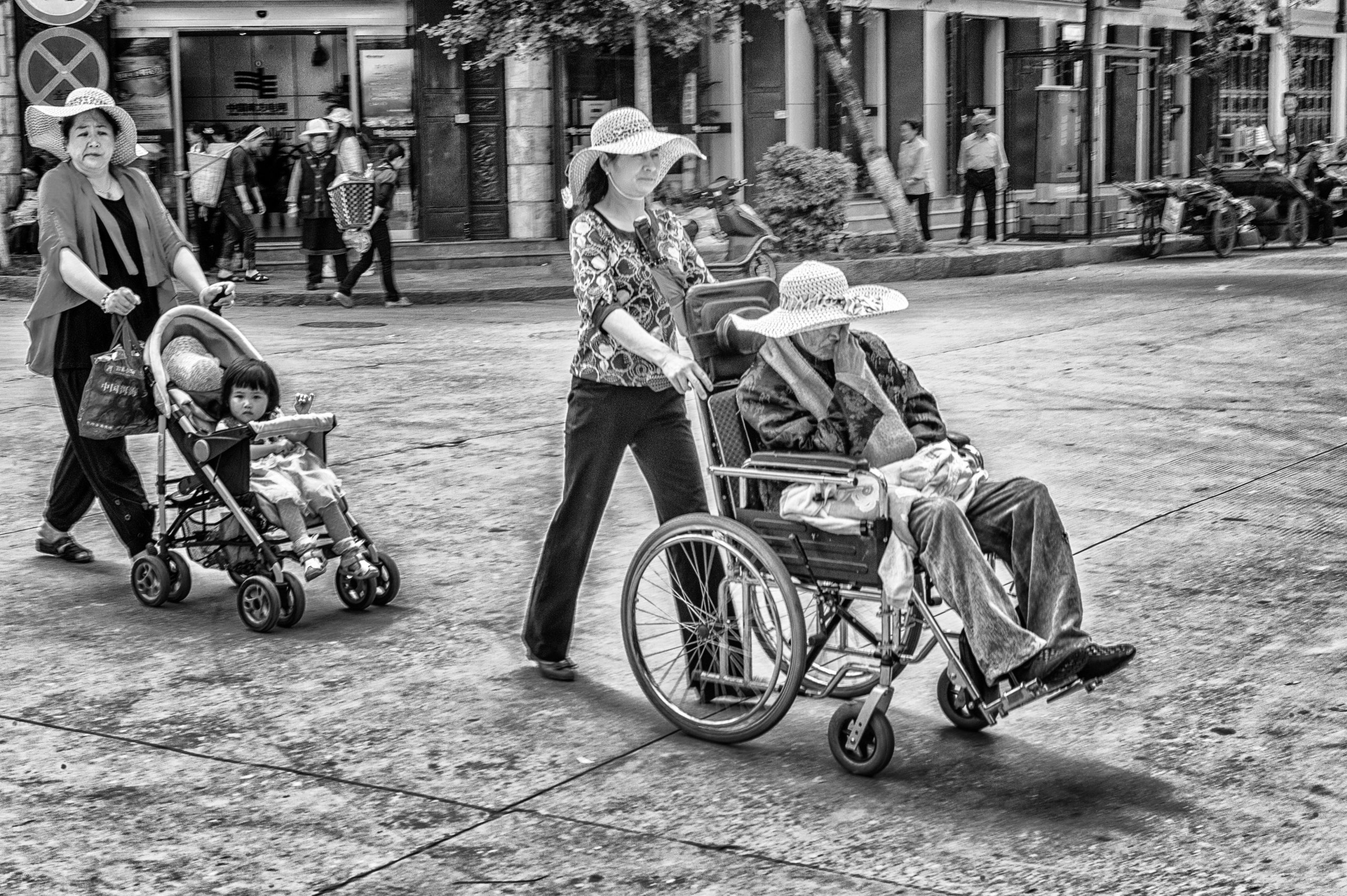
Lijiang was our next stop after Kunming, however the closest airport was in Dali. Dali is located on Lake Erhai, south of Lijiang. Our first stop was in the old town of Dali.
-
Fishermen
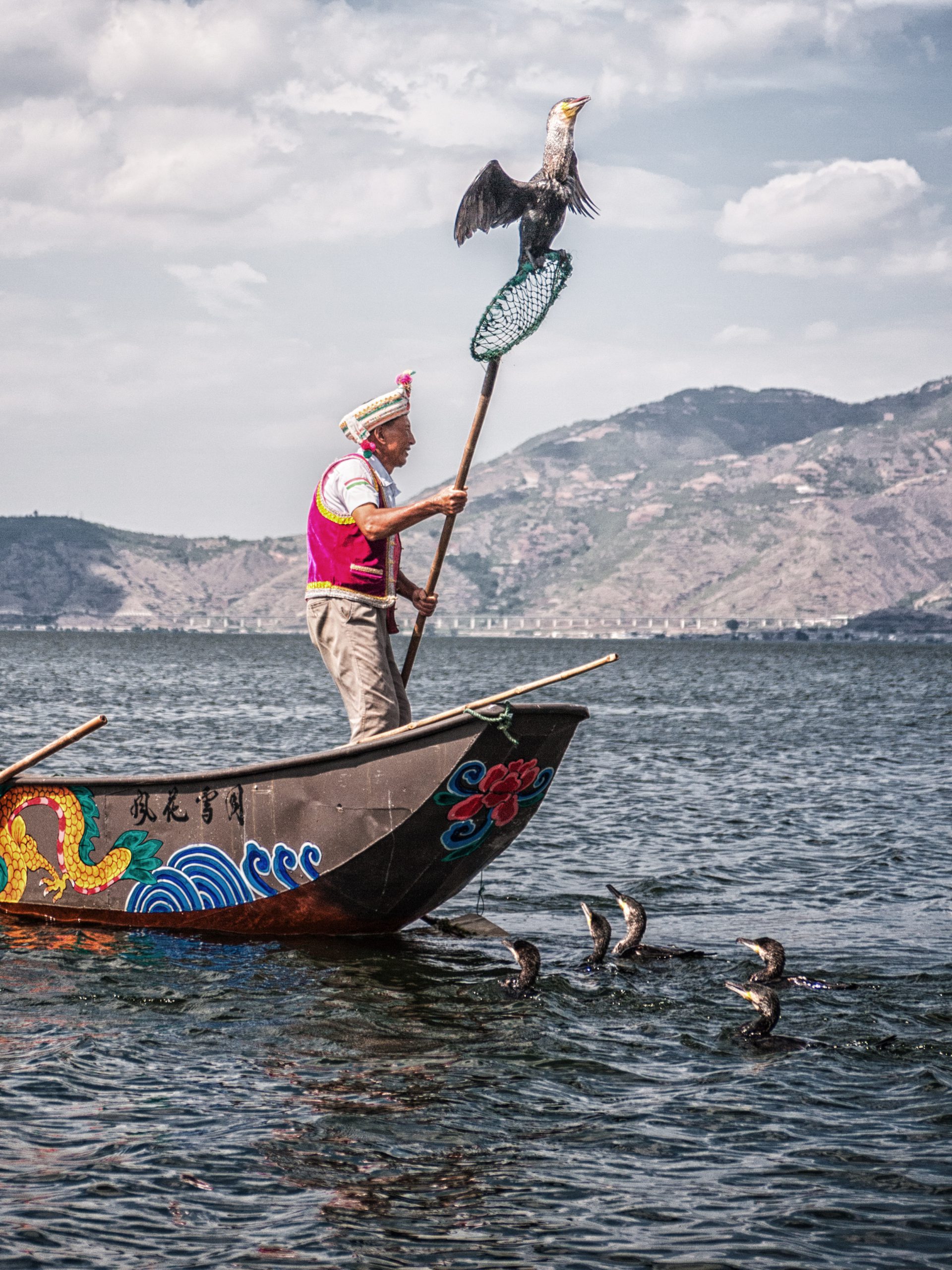
While driving north to Lijiang we stopped on Lake Erhai to see fishermen apply their traditional techniques to catch fish: cormorants. Fishing is a team effort: the woman (wife) rows the boat, while the man (husband) manages the birds, releasing them and then catching them. Staged, but interesting regardless.
-
Lijiang
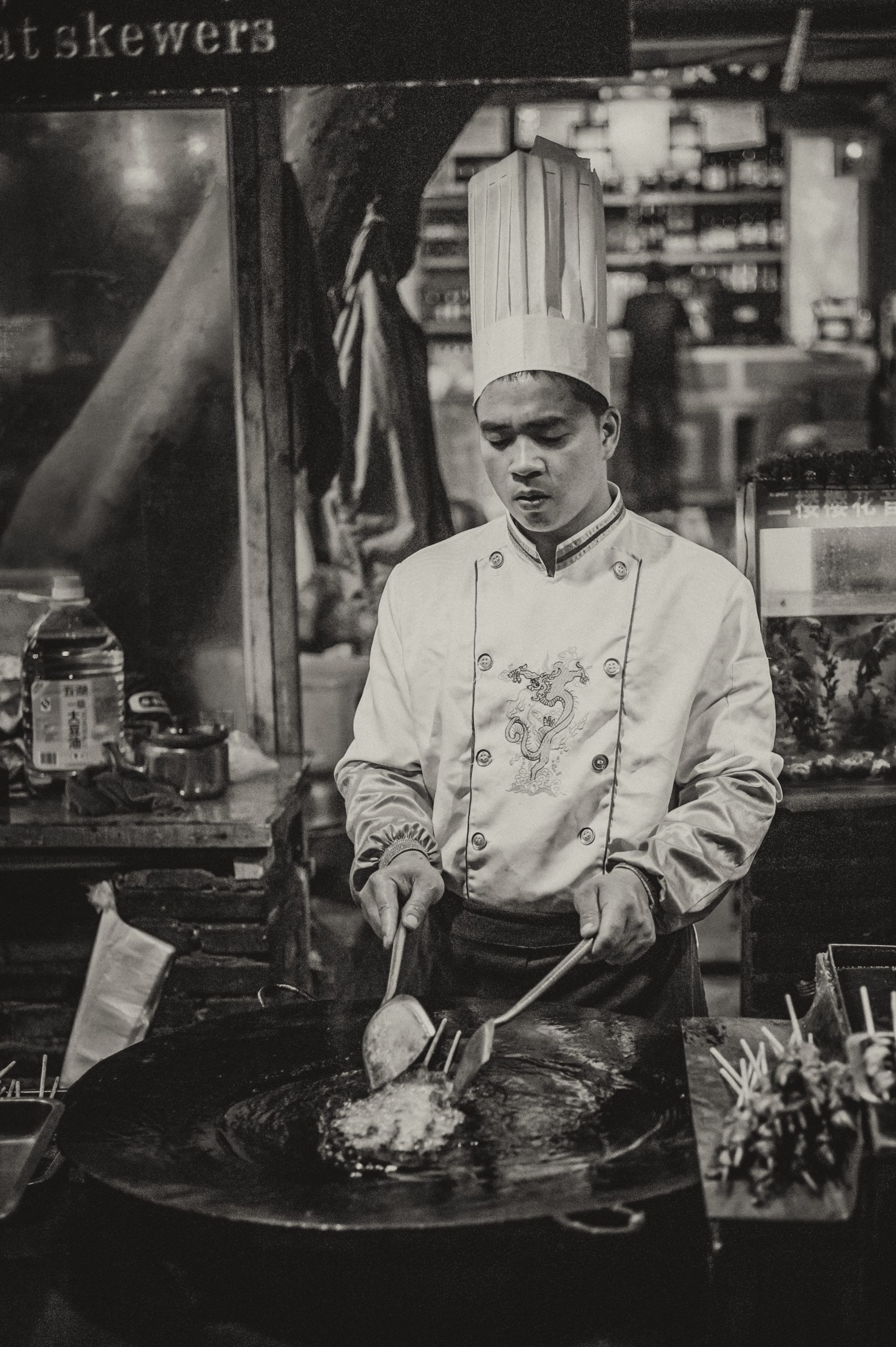
We arrived later in the day in Lijiang. From the hotel we took a short taxi ride to the old town. Lijiang’s old town is quite large and is completely renovated. While I expect it once included residential buildings, most are now shops, restaurants, bars and small boutique hotels.
-
Impressions of Lijiang
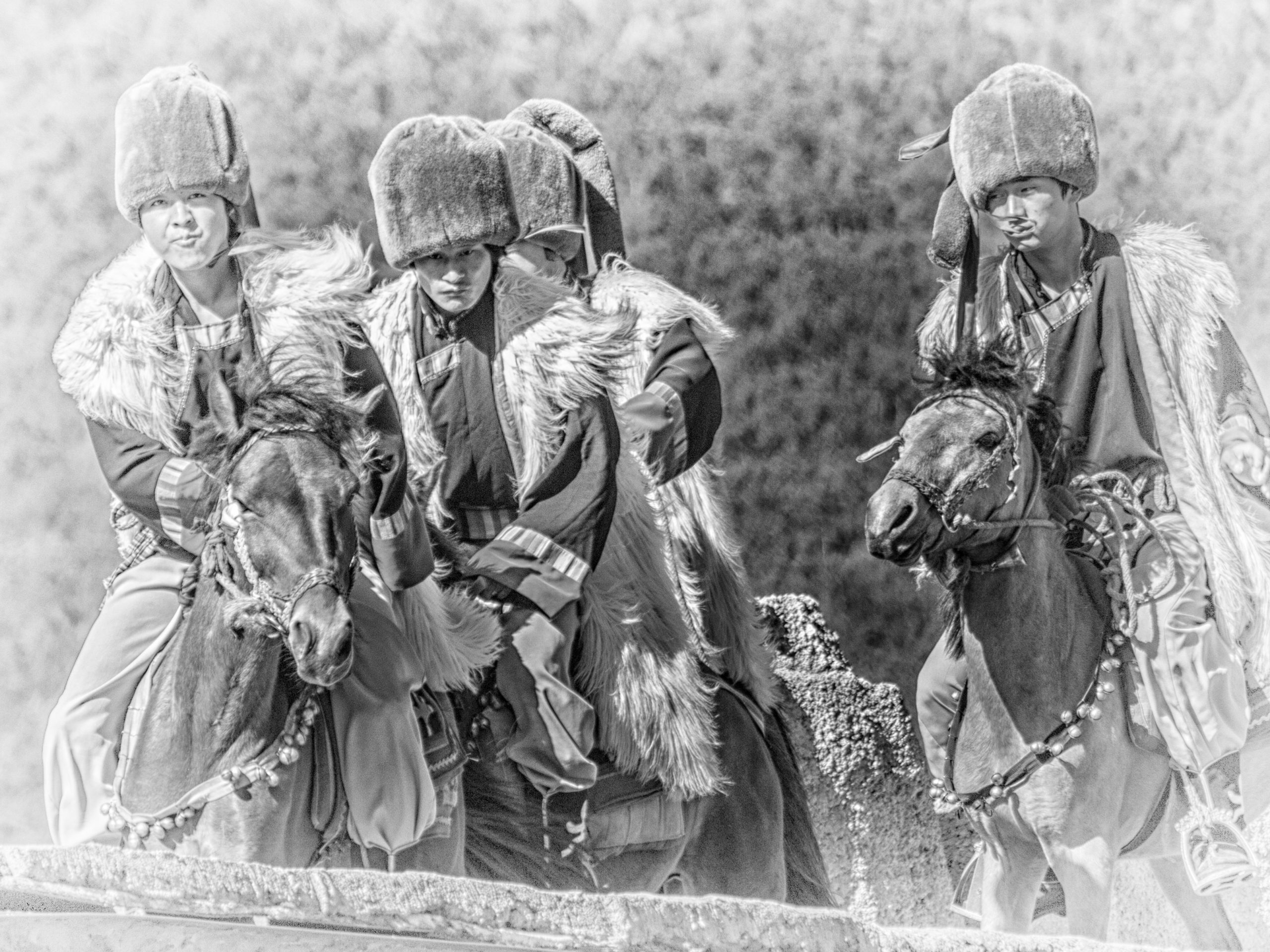
The musical by the name above is presented in an outdoor theatre situated next to Jade Dragon Snow Mountain. We attended the morning show after which we climbed the mountain.
-
Jade Dragon Snow Mountain
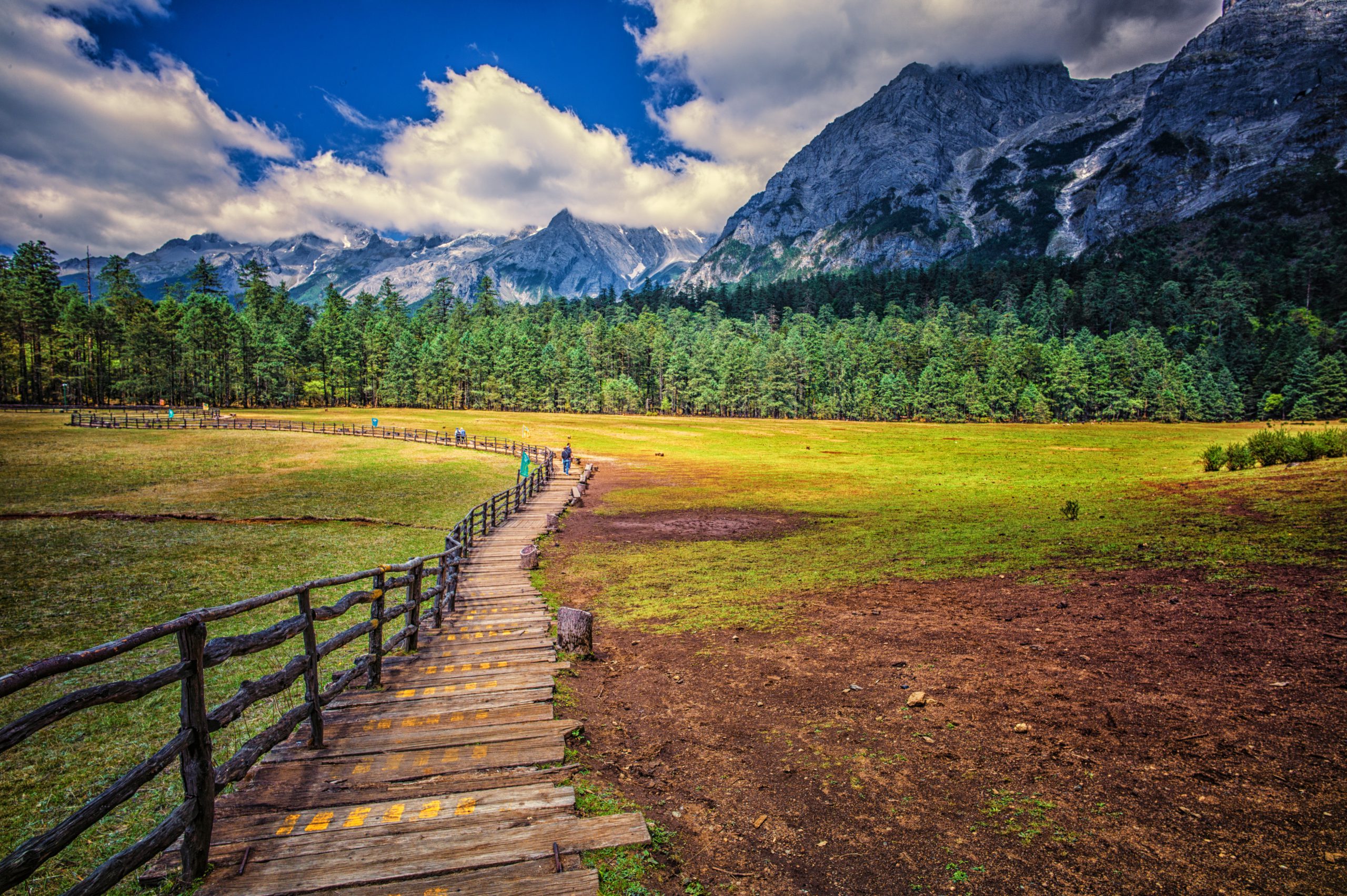
A pathway in the upper meadow. In the days following our hike along the Tiger Leaping Gorge would take us to the other side of this mountain.
-
Bai Sha Village
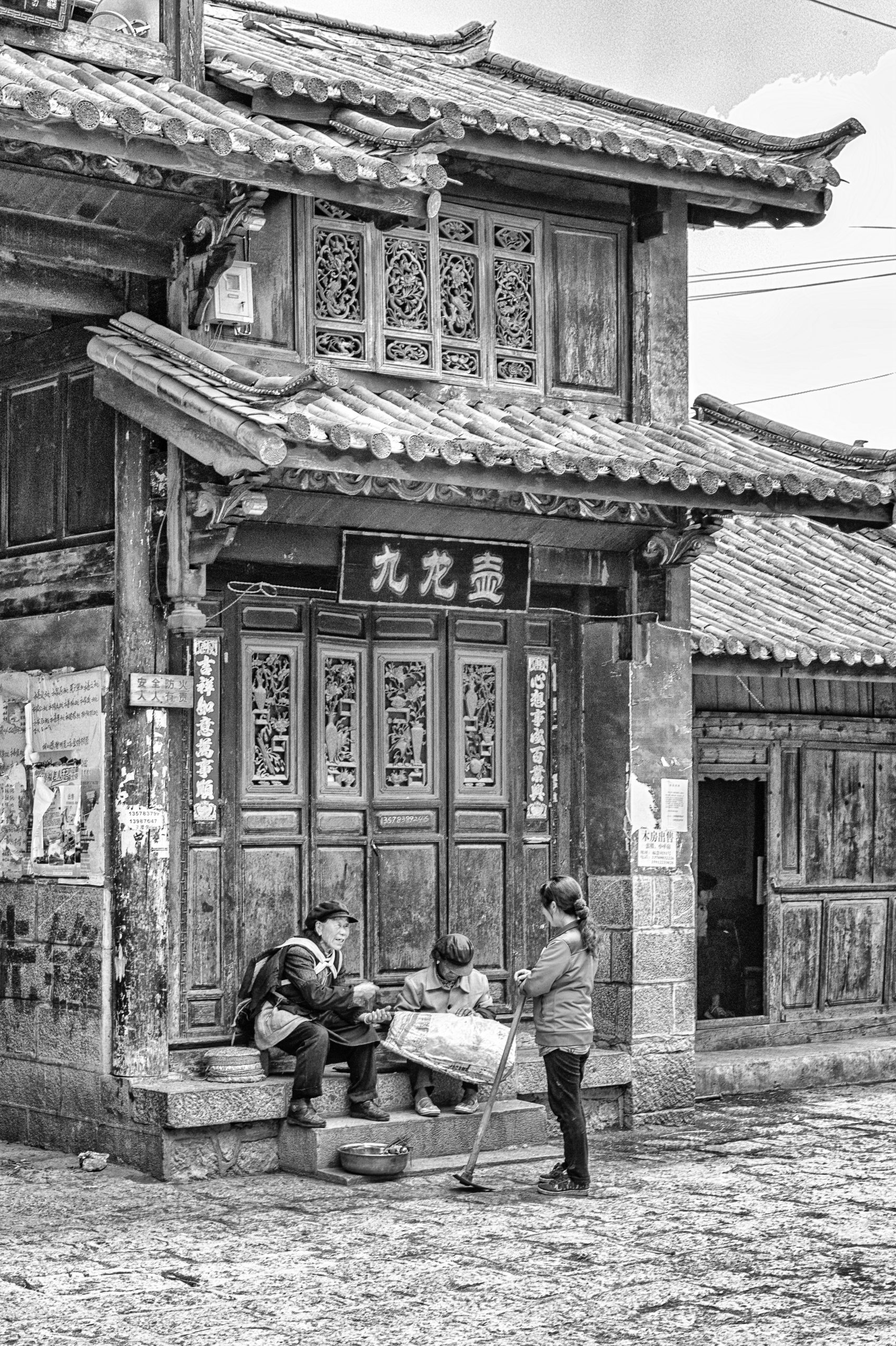
After our hike to Jade Dragon Snow Mountain we returned to Lijiang, but after stopping for lunch in a little village.
-
Lijiang
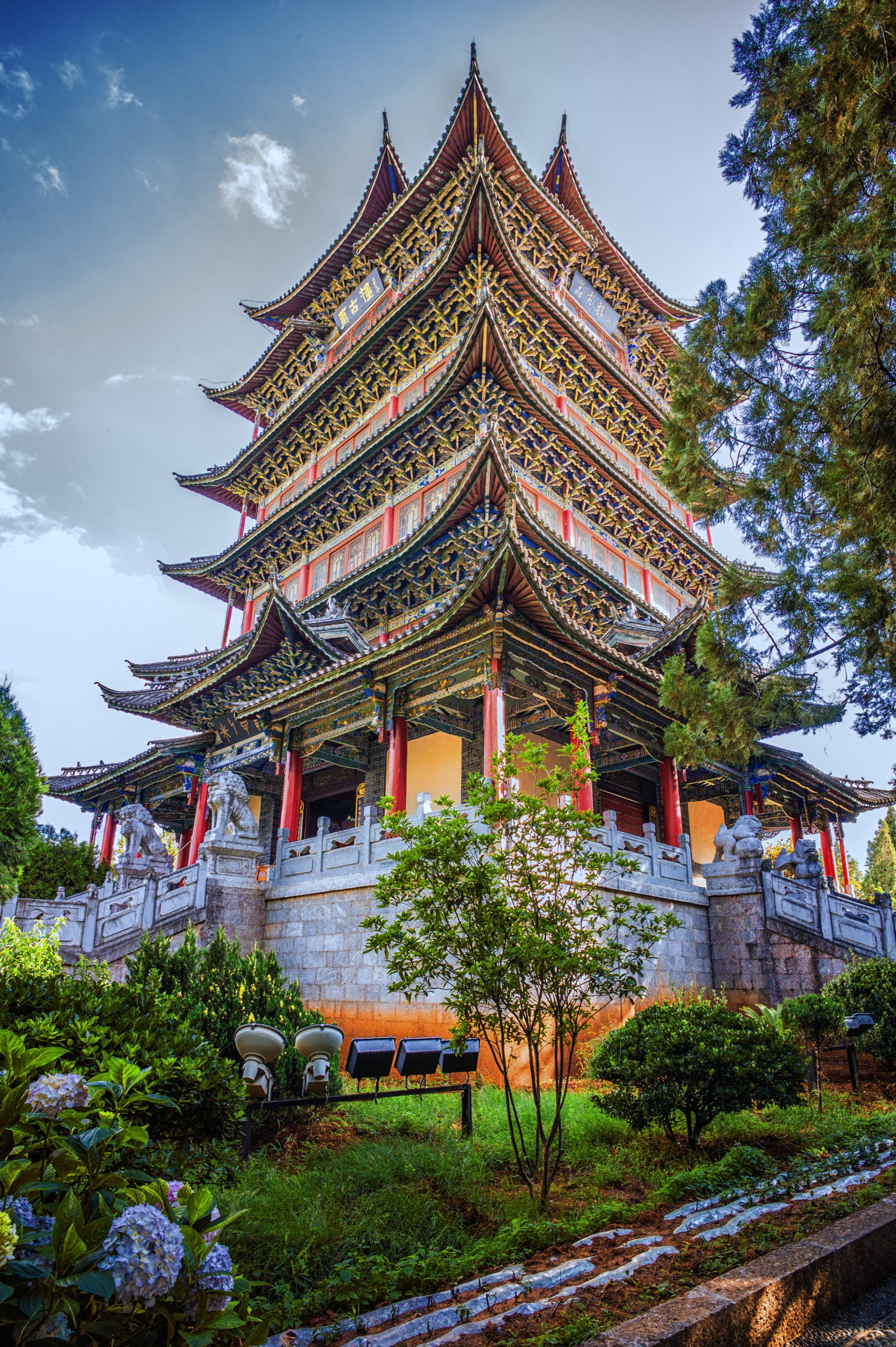
On our last afternoon in Lijiang we climbed the hill in the centre of the old town to reach the temple. Climbing the to top of the temple gave a view of the entire city.
-
Tiger Leaping Gorge, Day 1
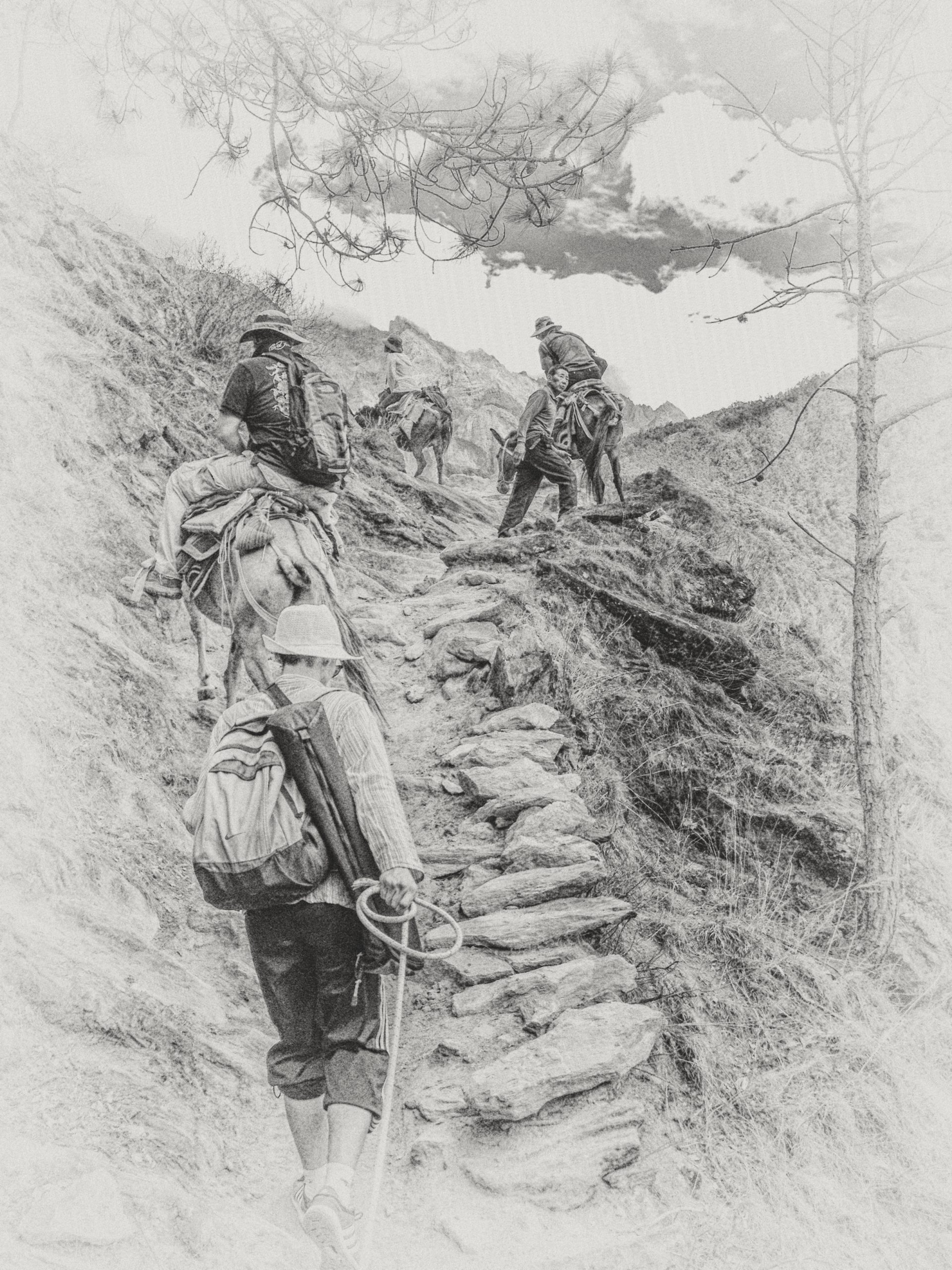
The river in the Gorge is the upper Yangtze. The trail is about 23 KM and certainly the first several kilometres are largely up hill and difficult. We were fortunate to have sunny weather, although it was a bit hot. Our guide was able to carry some of our packs making the hike that much…
-
Tea Horse Inn
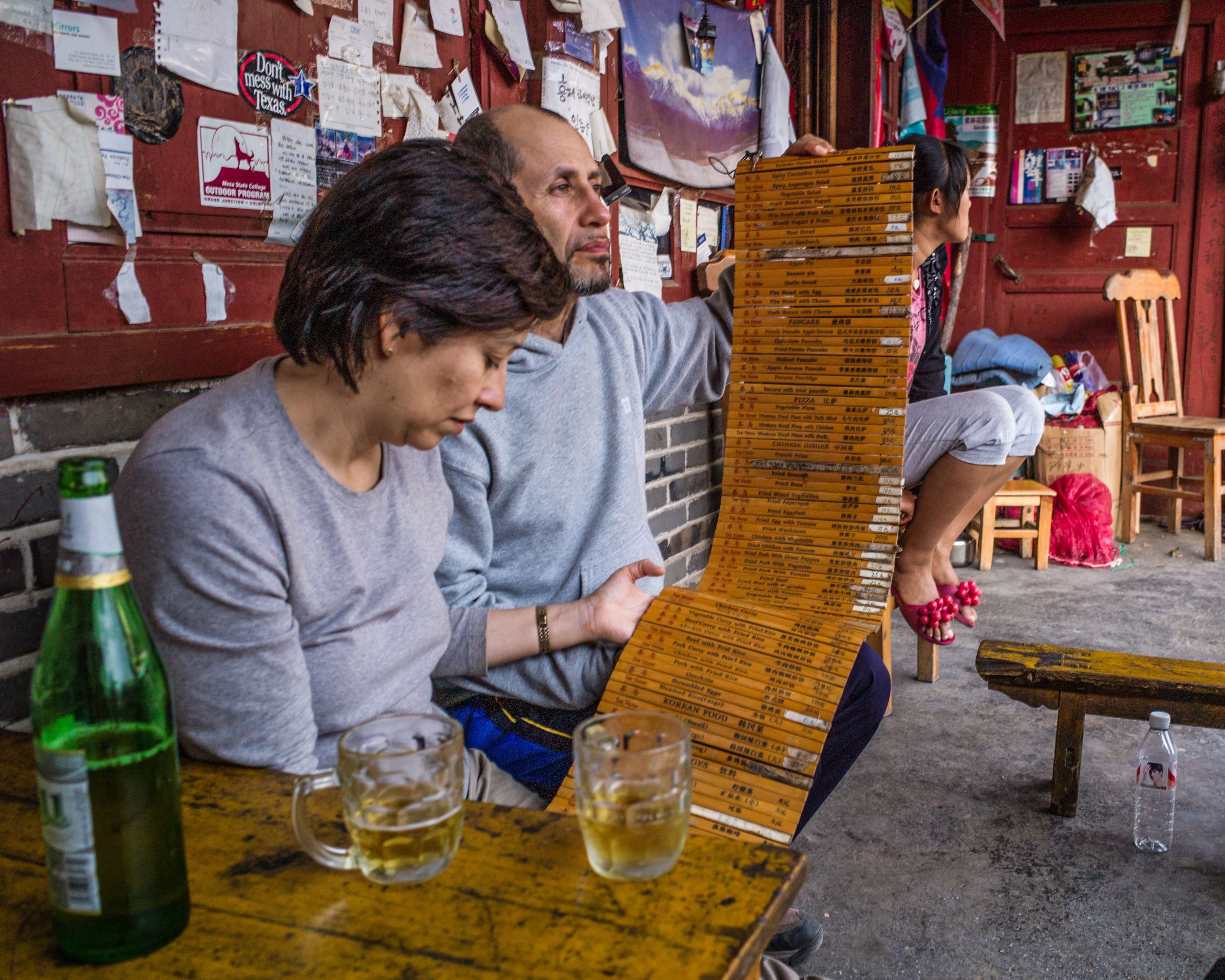
We spent the first night at the Tea Horse Inn. So called as the trail we travelled was formerly a trade route connecting Kunming and the tea-producing areas in China with Burma and India. The Inn is a family-run operation with an international clientele. The amenities are basic, but clean. There is one menu…
-
Tiger Leaping Gorge, Day 2
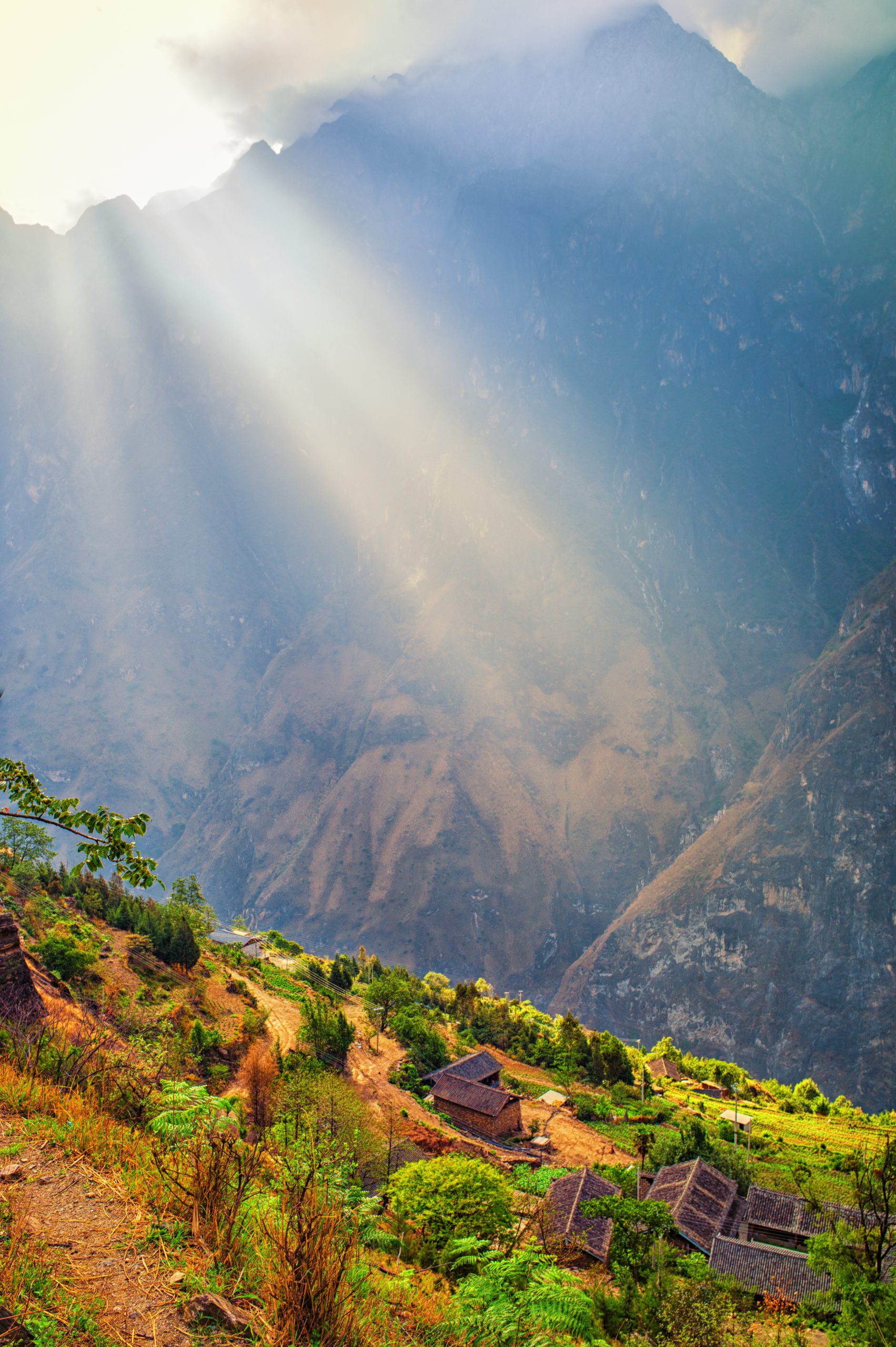
We left the Tea Horse Inn early, around 7:00 AM. Our intent was to reach the Halfway House for breakfast and then the end of the trail by noon. We accomplished these goals.
-
Shangri La
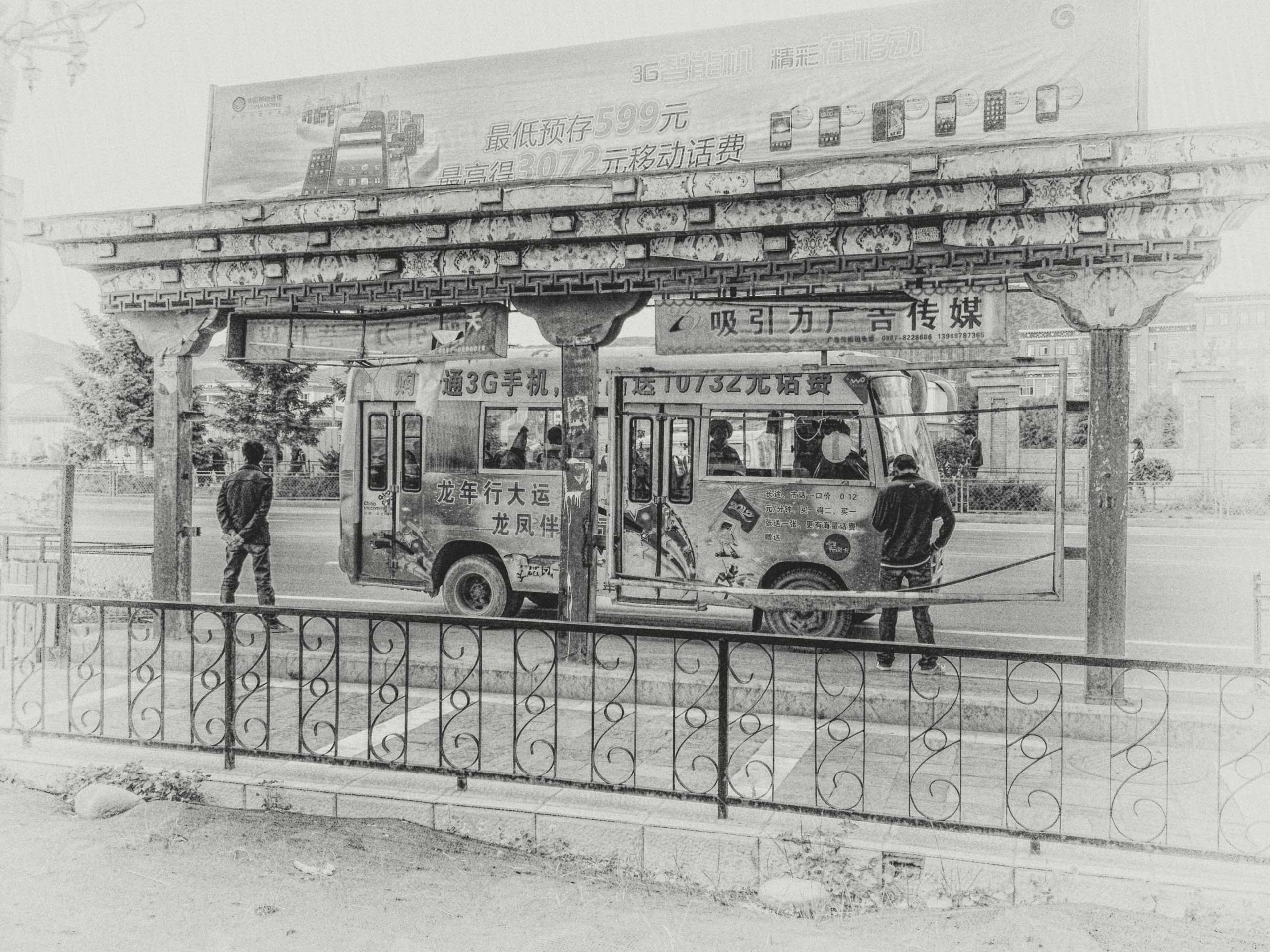
After the Gorge we drove to Deqen, a city whose “marketing name” is Shangri La. While this area was once part of Tibet, this is not the city made famous in Lost Horizons. The following day we flew back to Hong Kong and then to Toronto.
